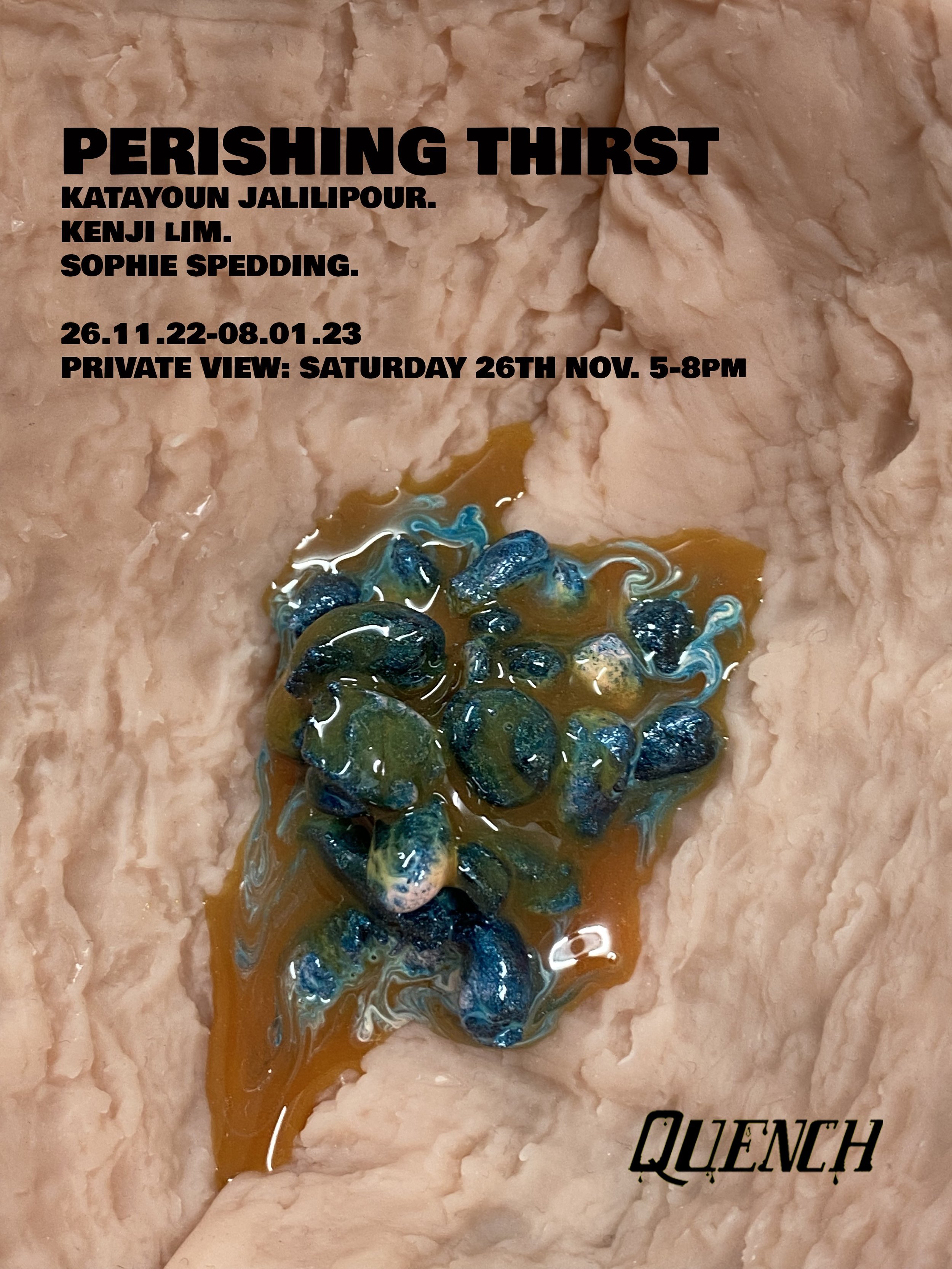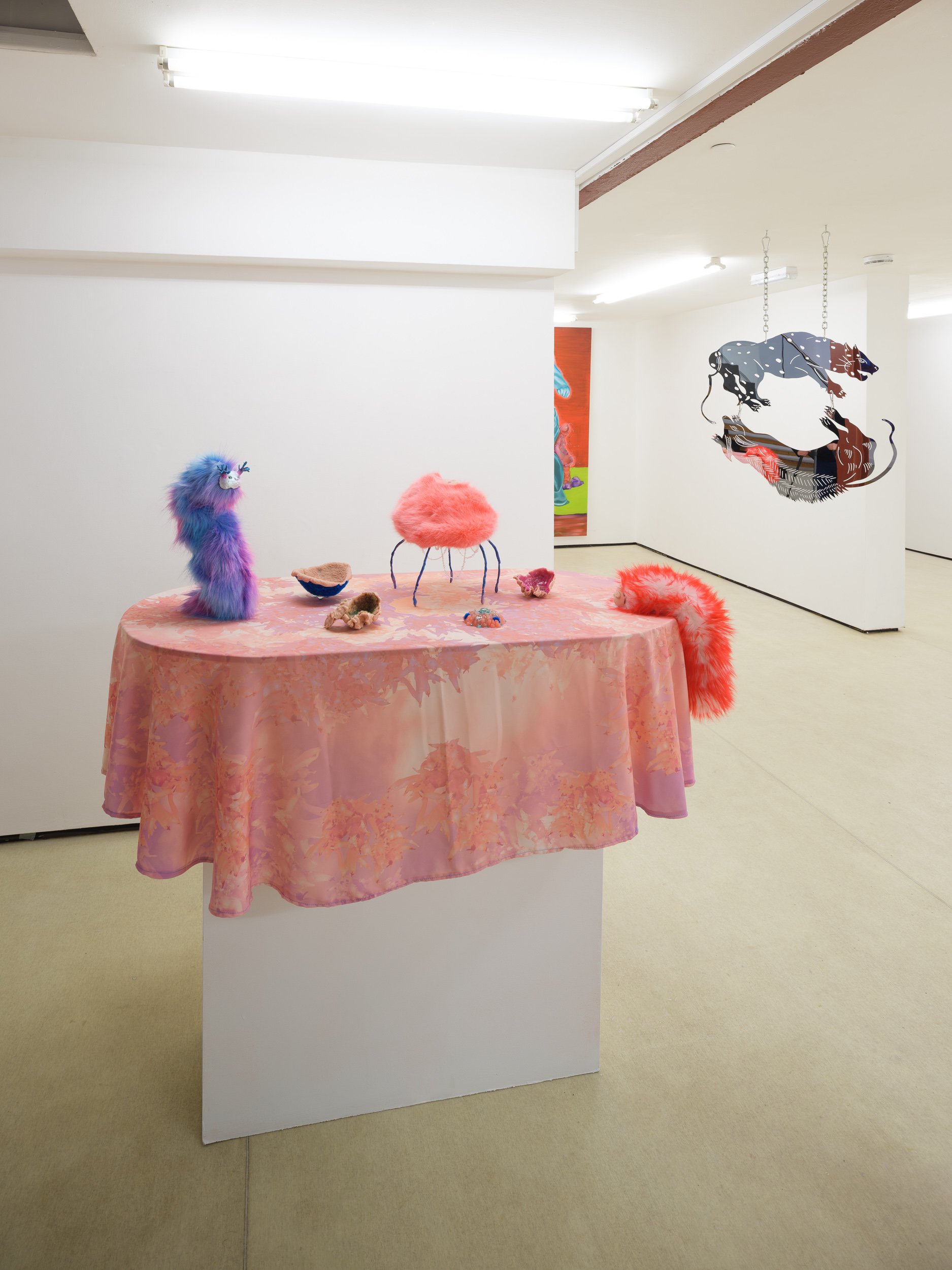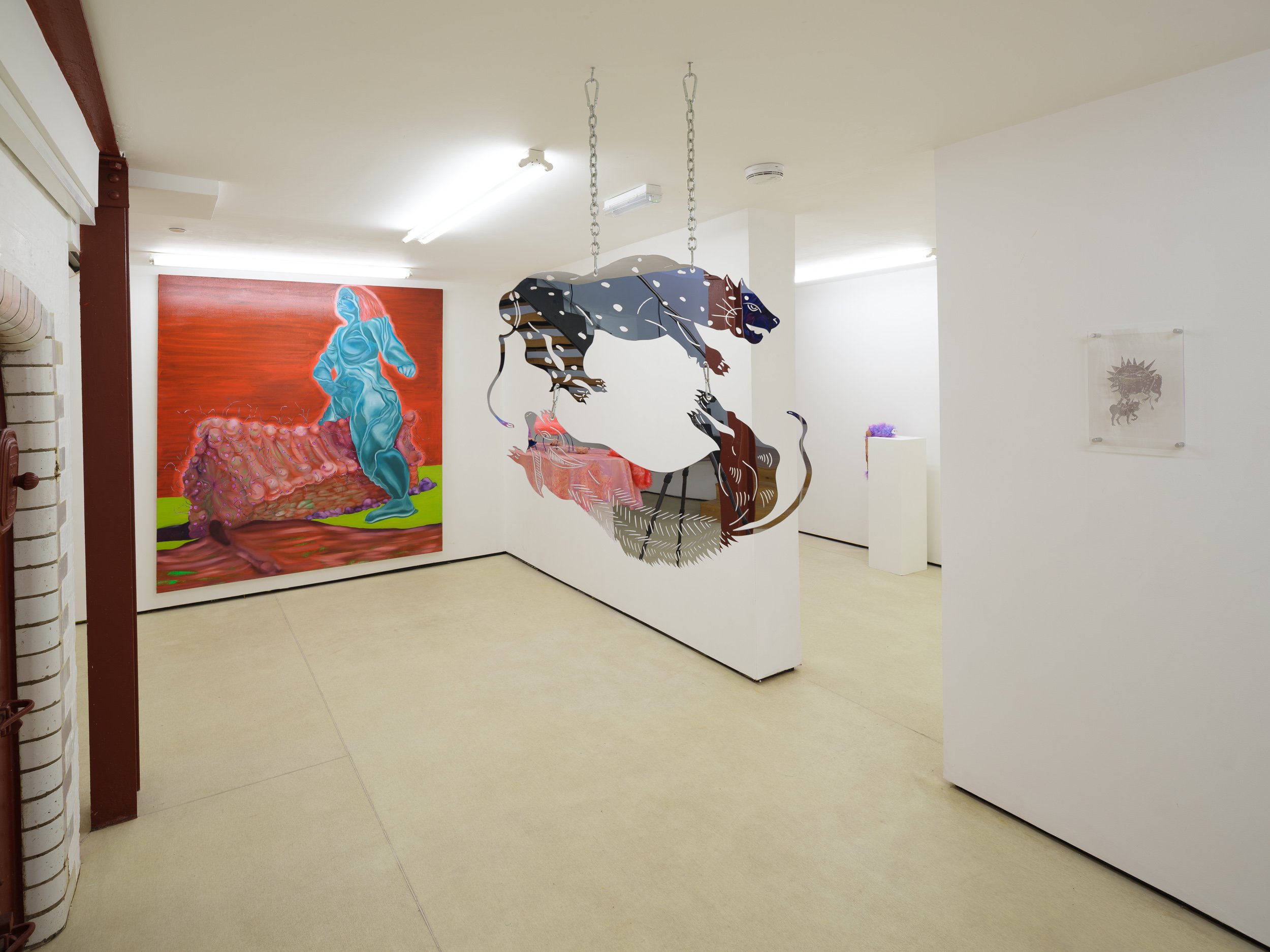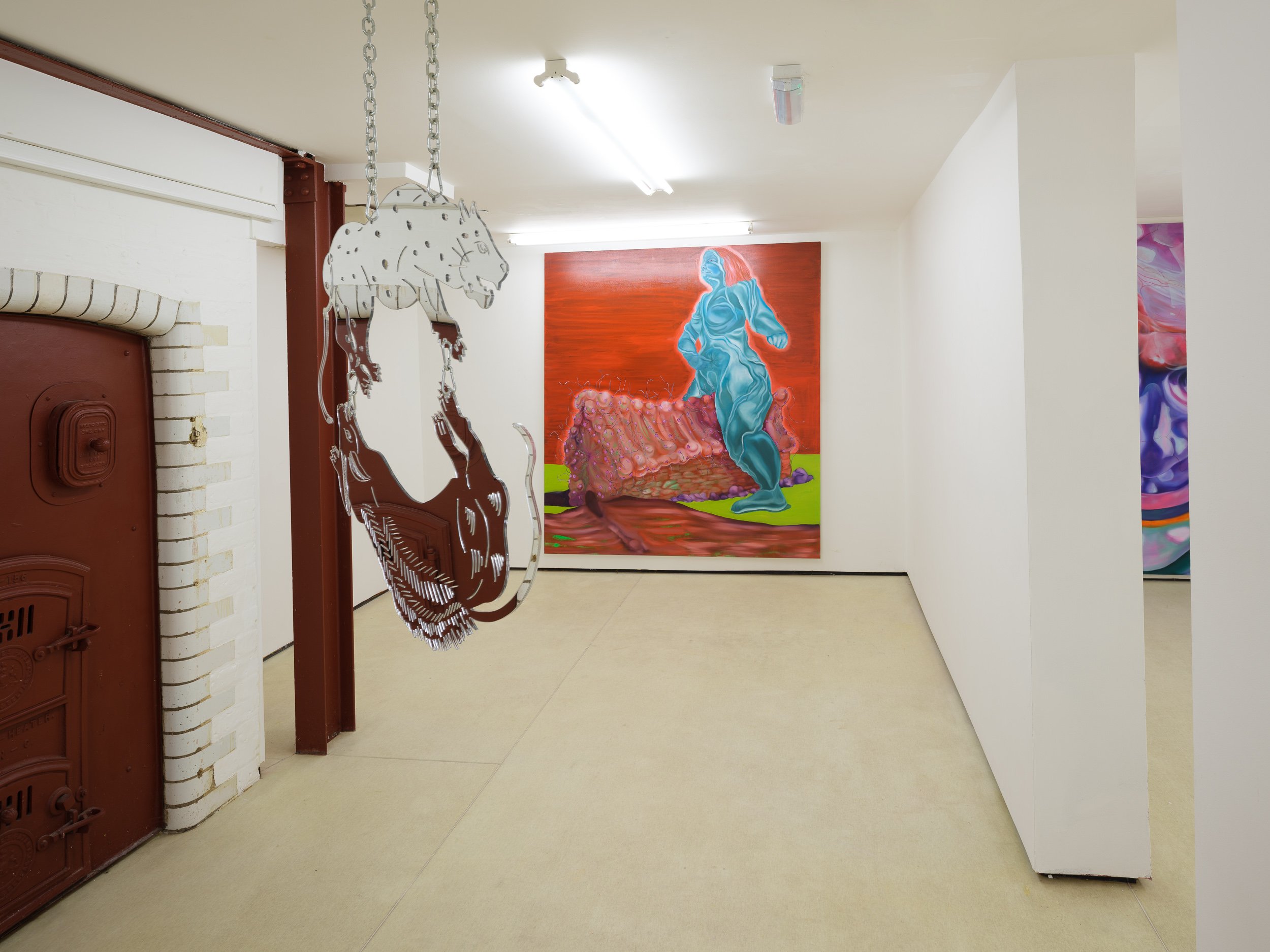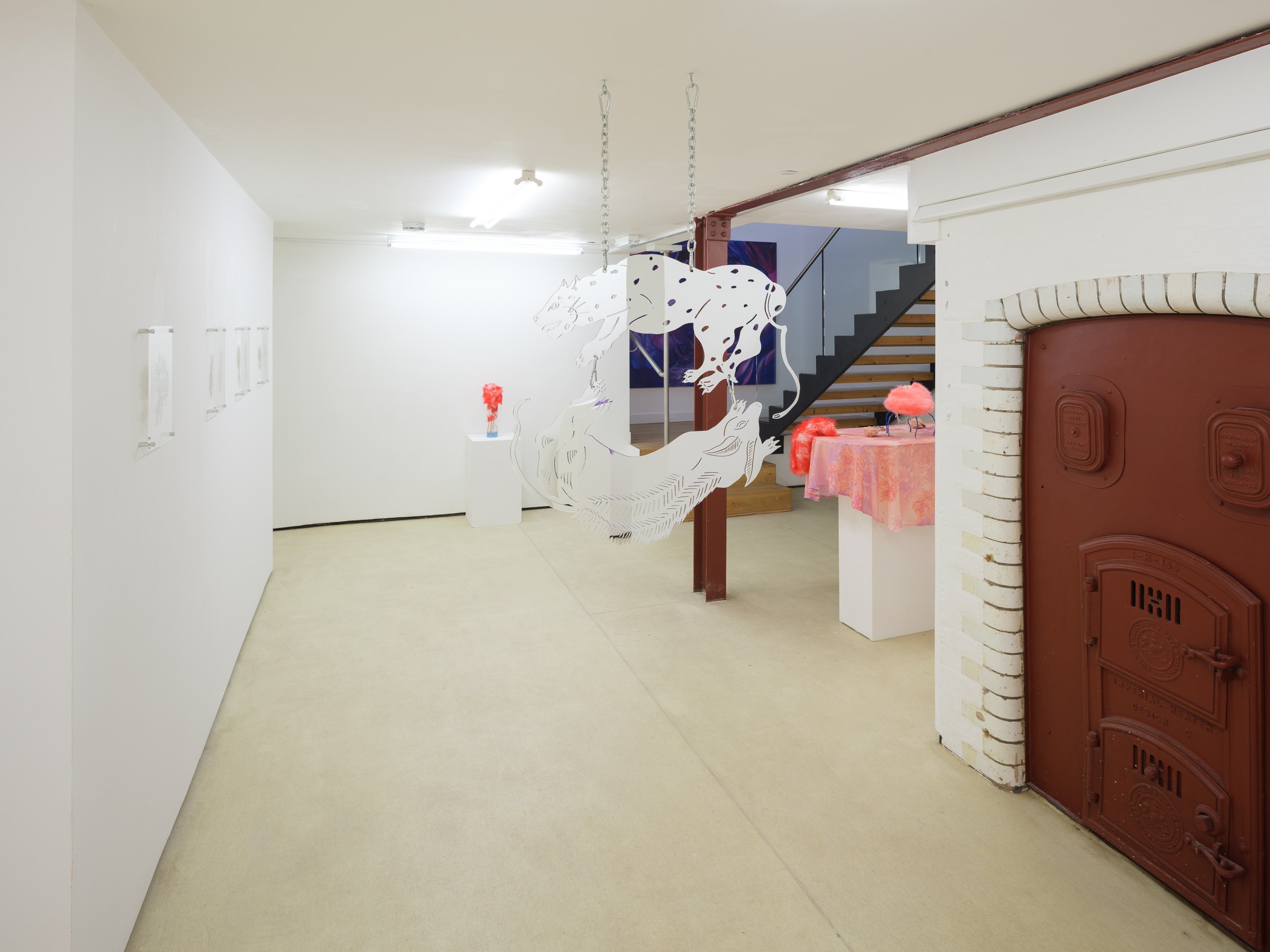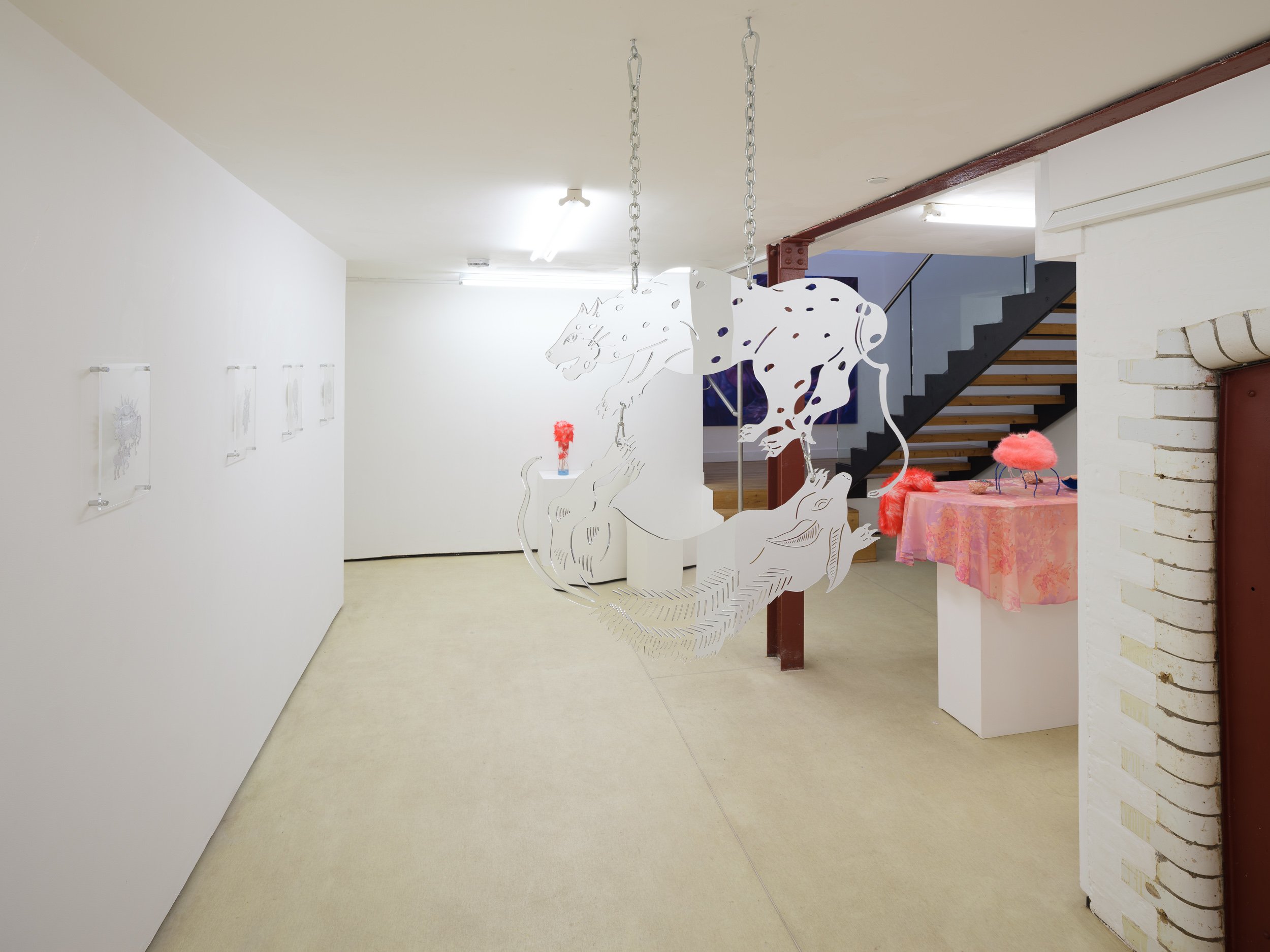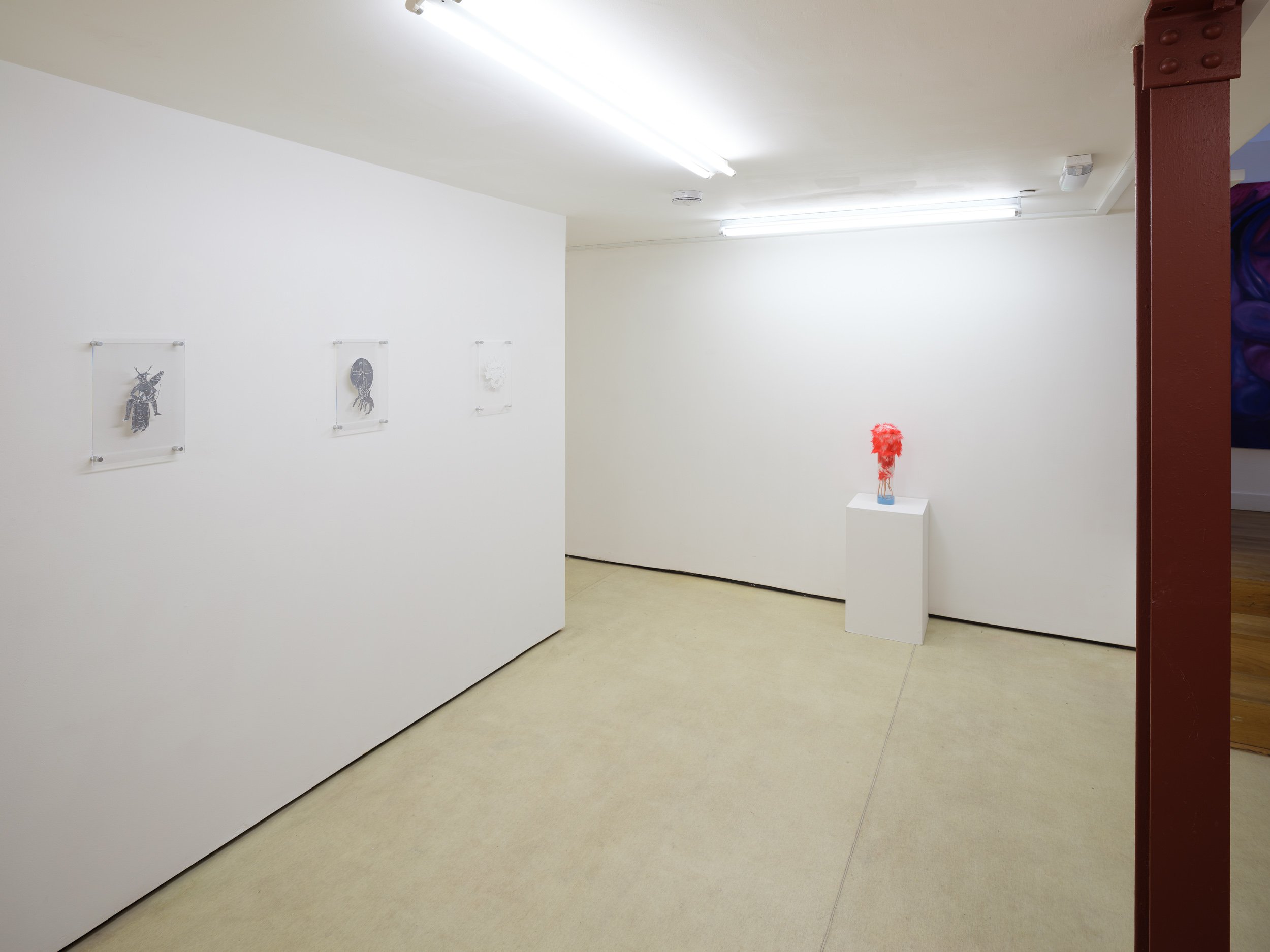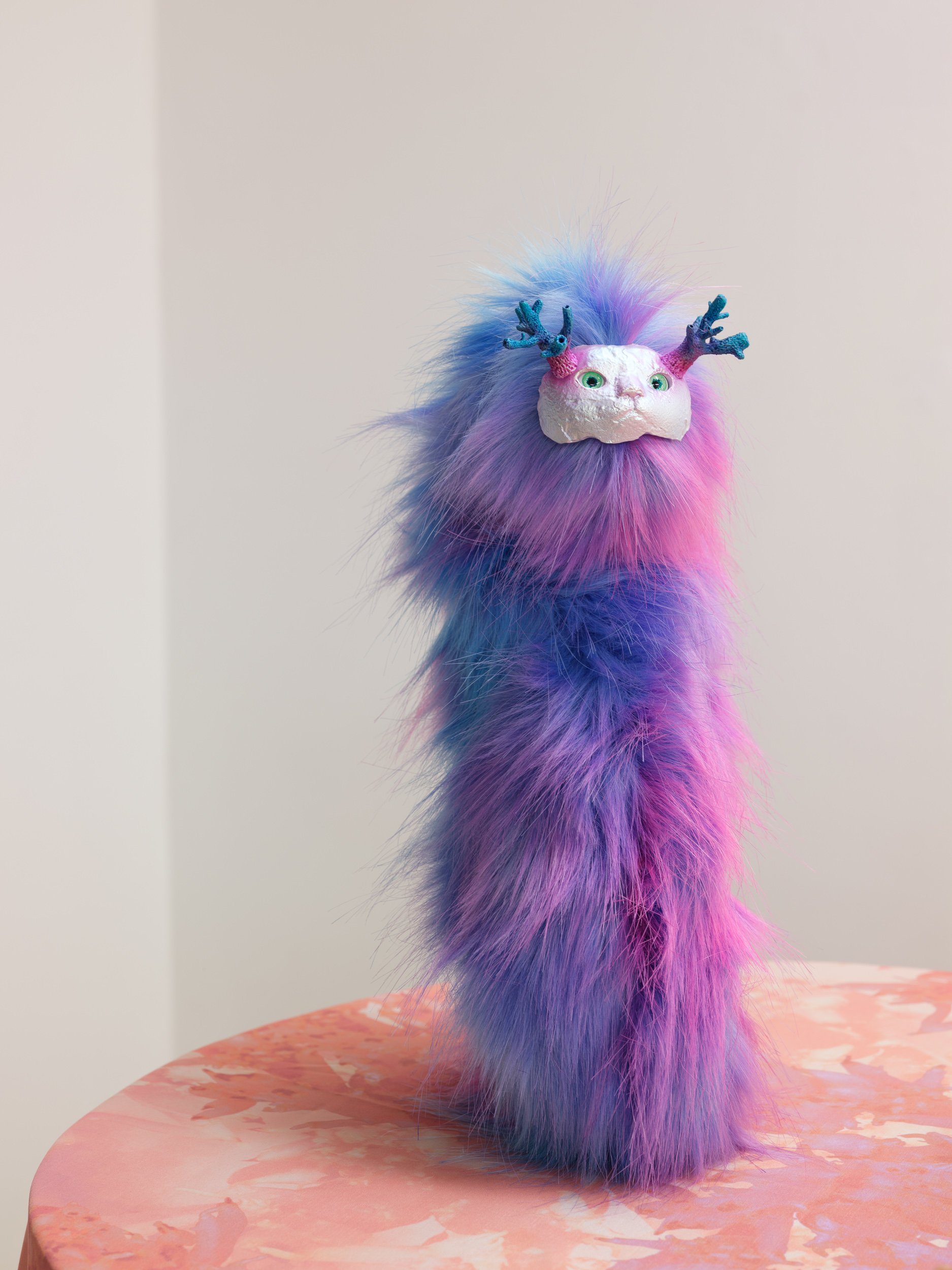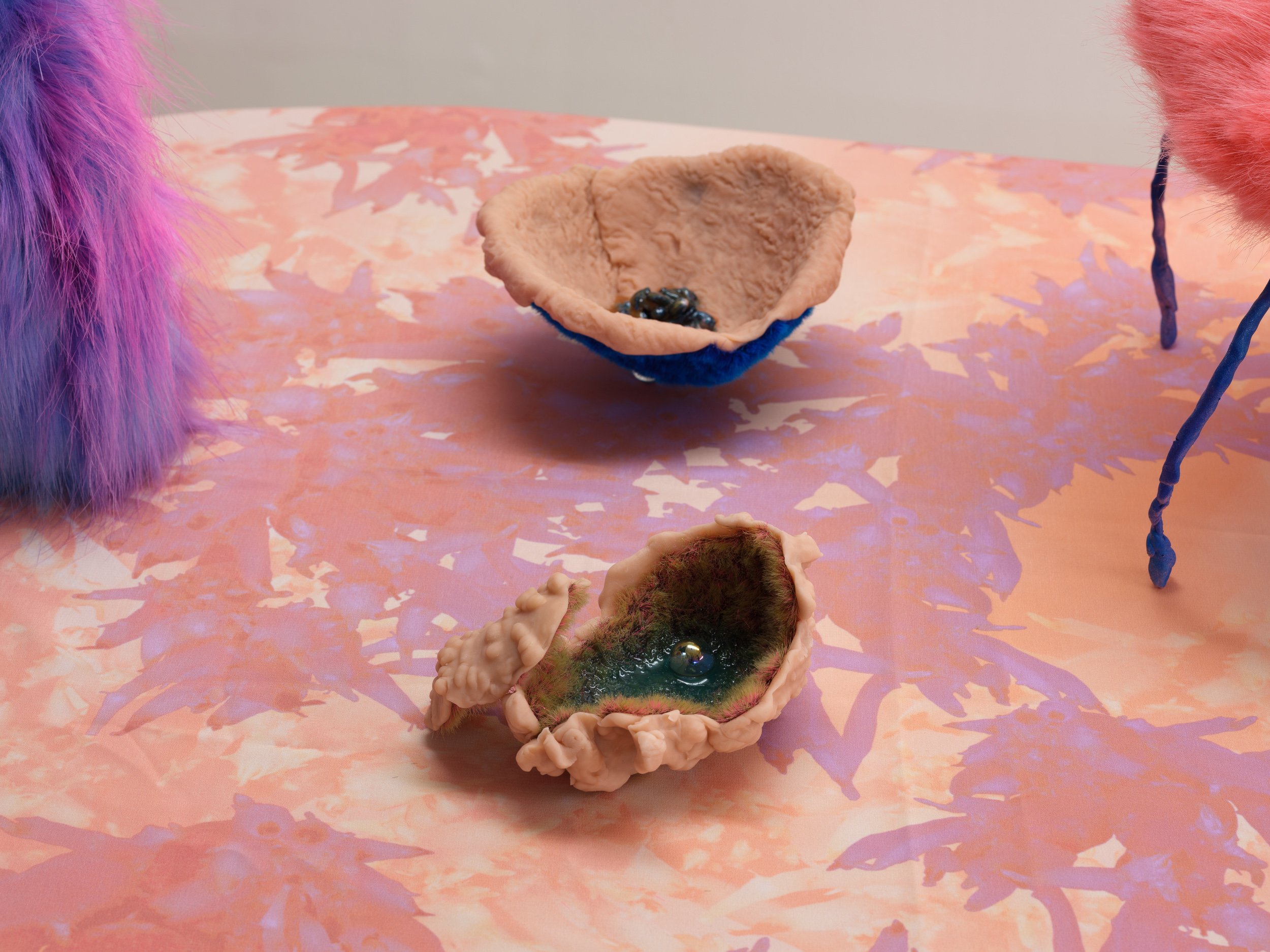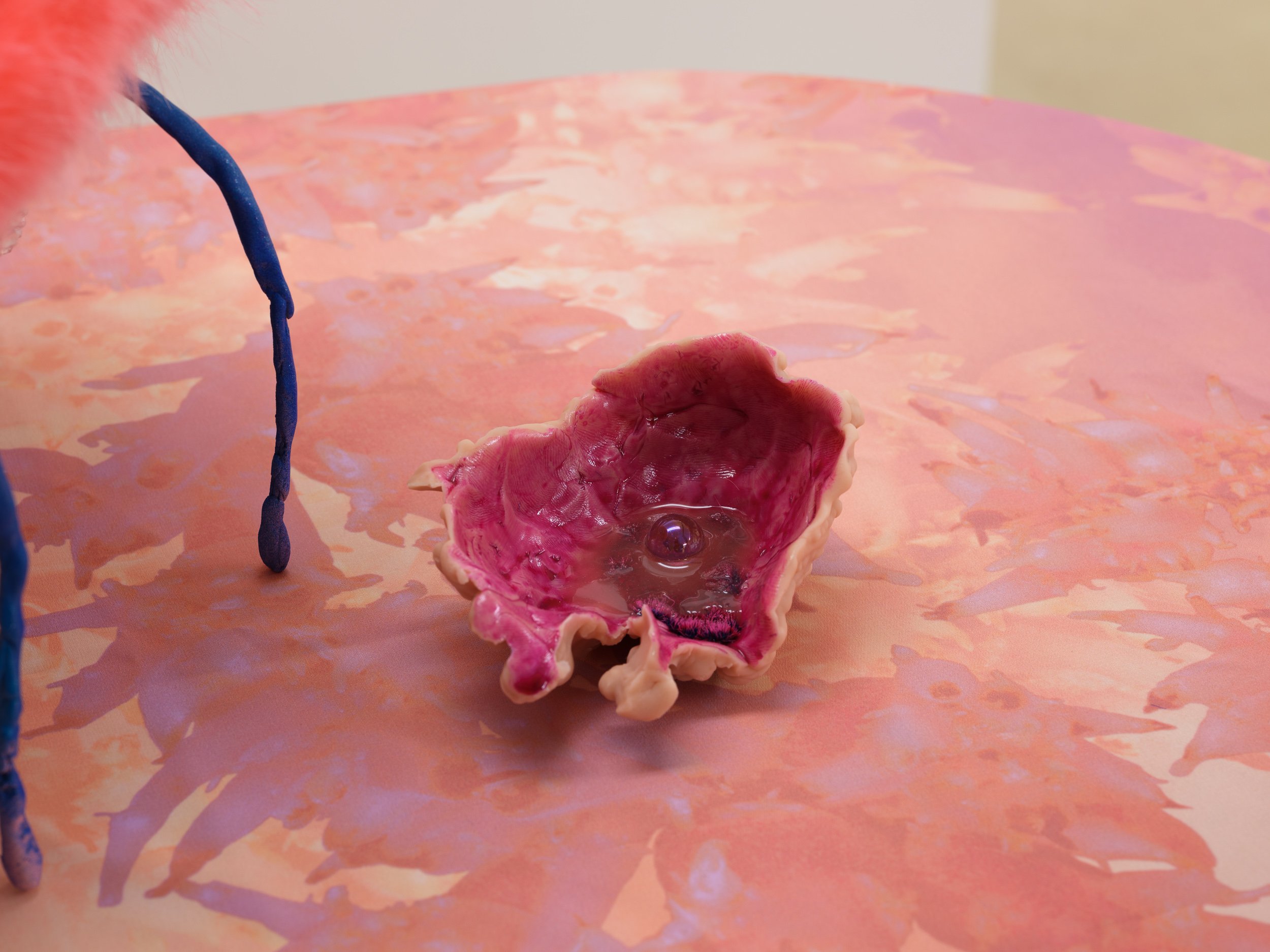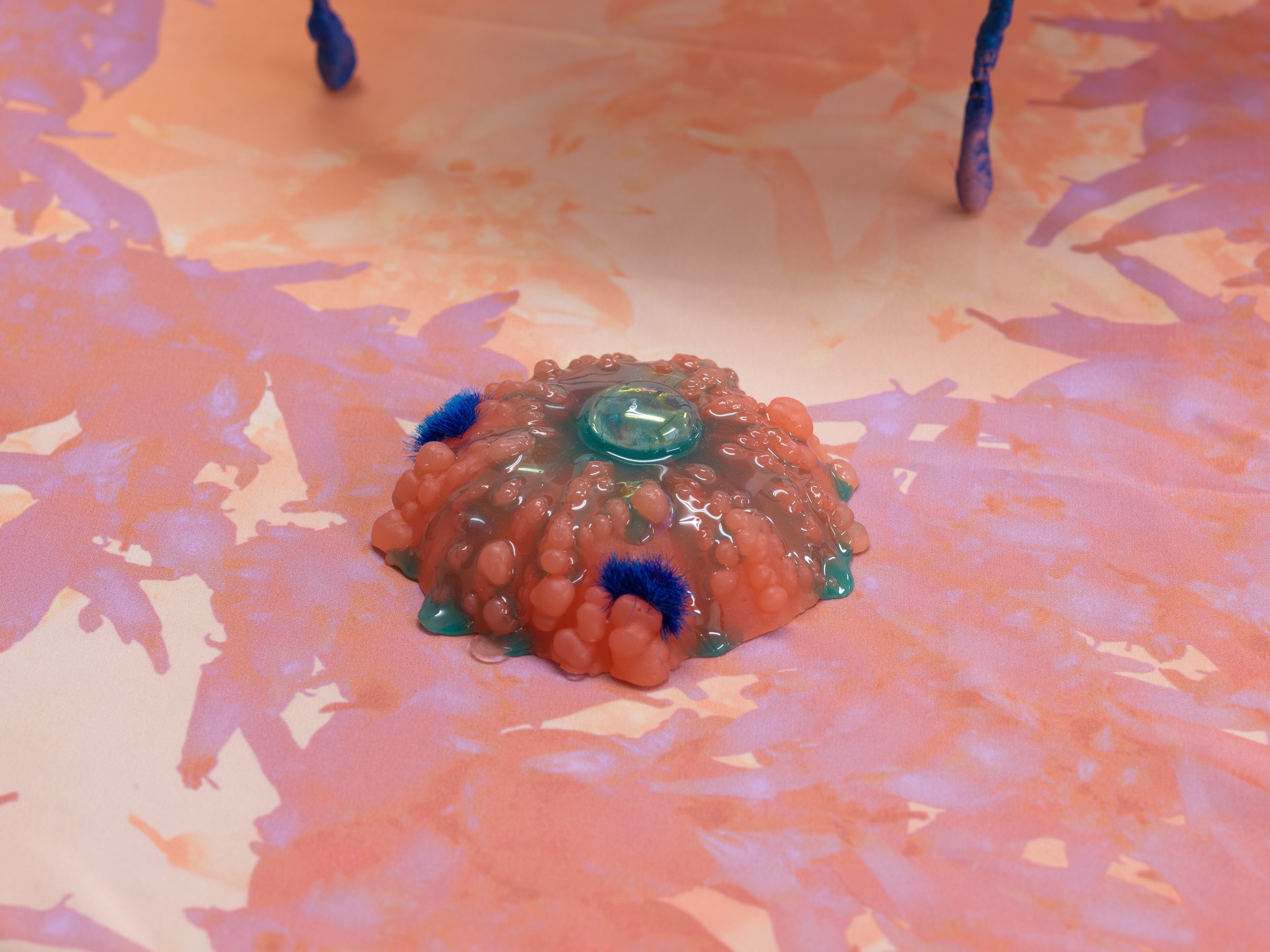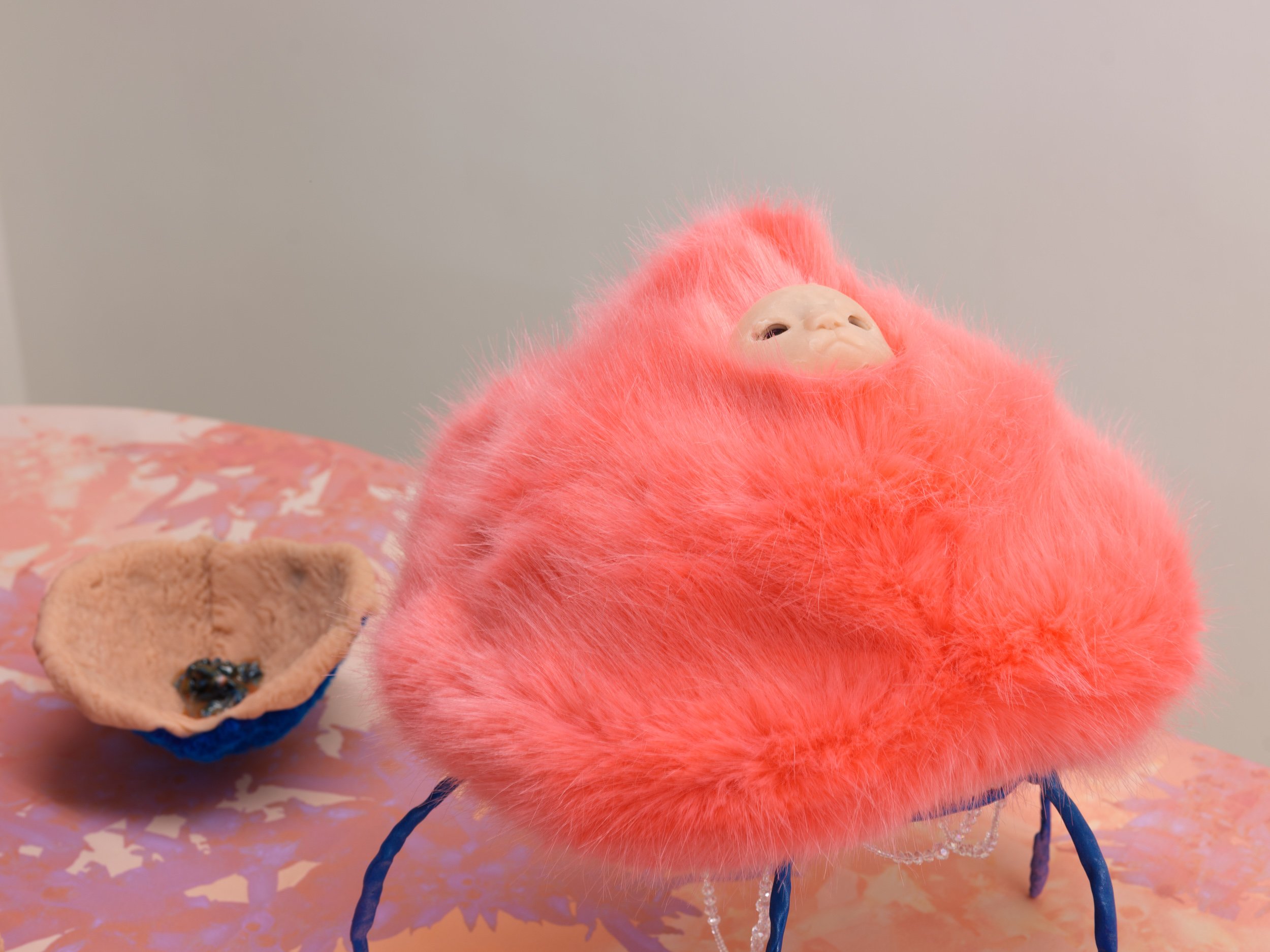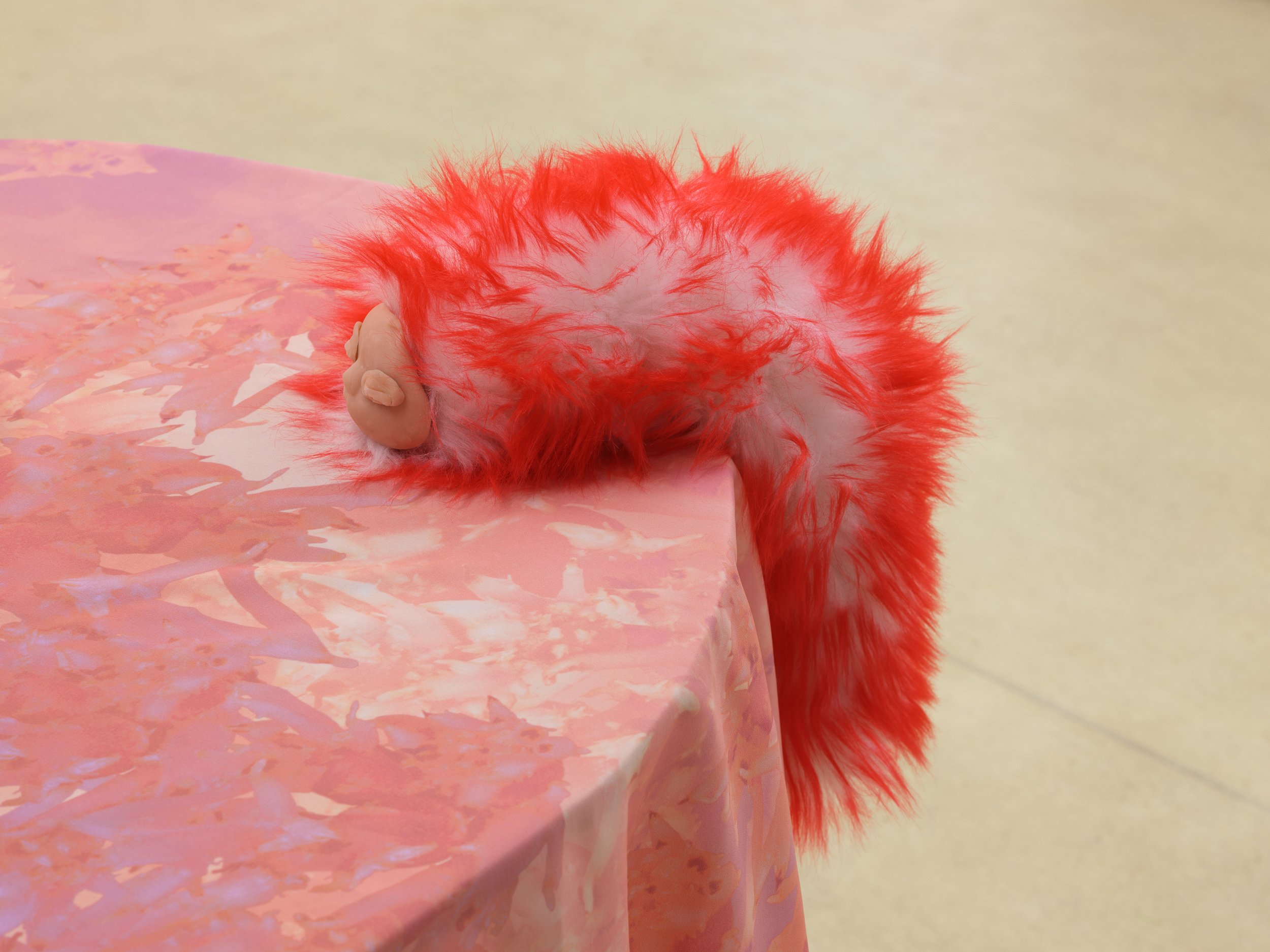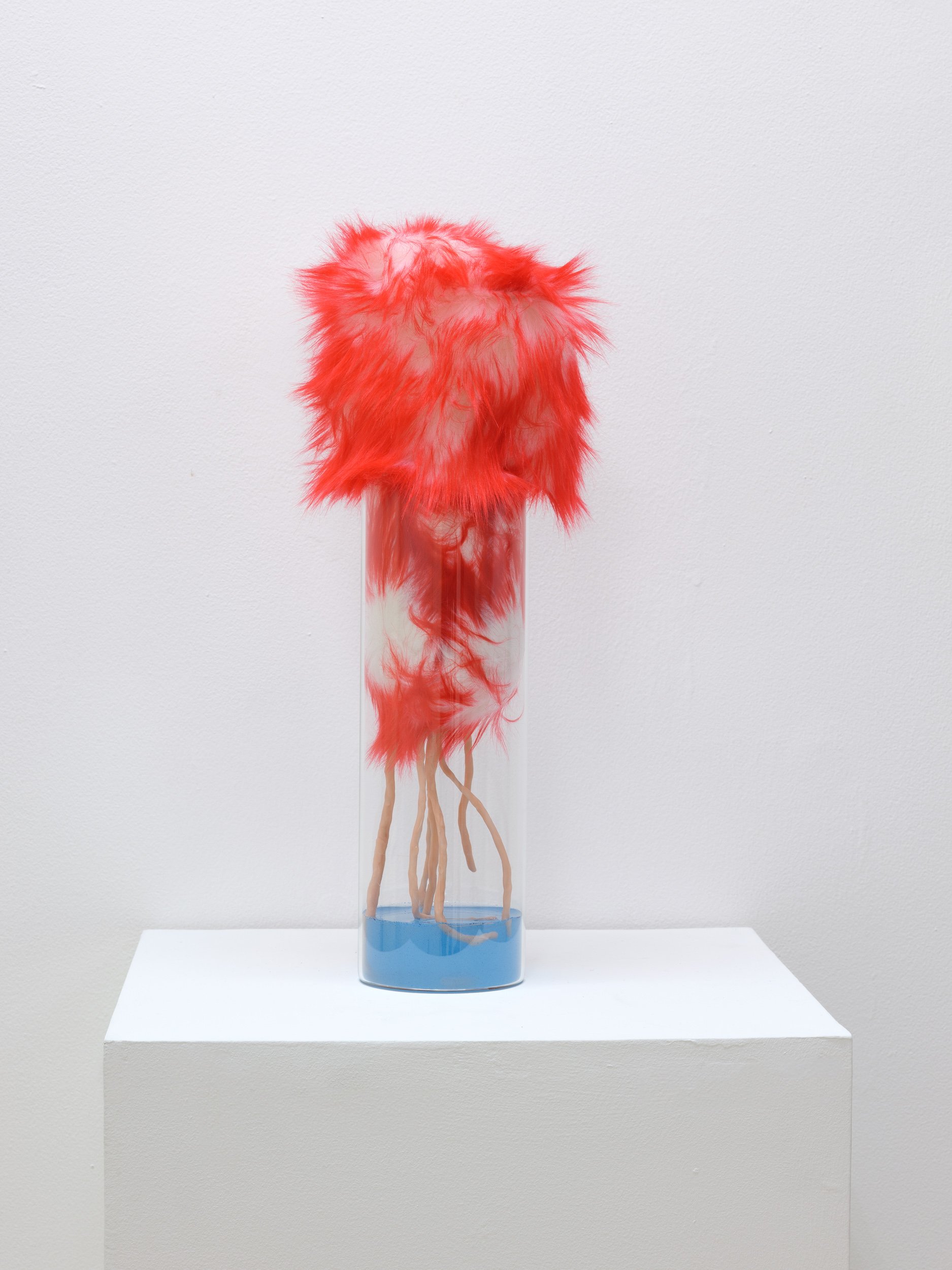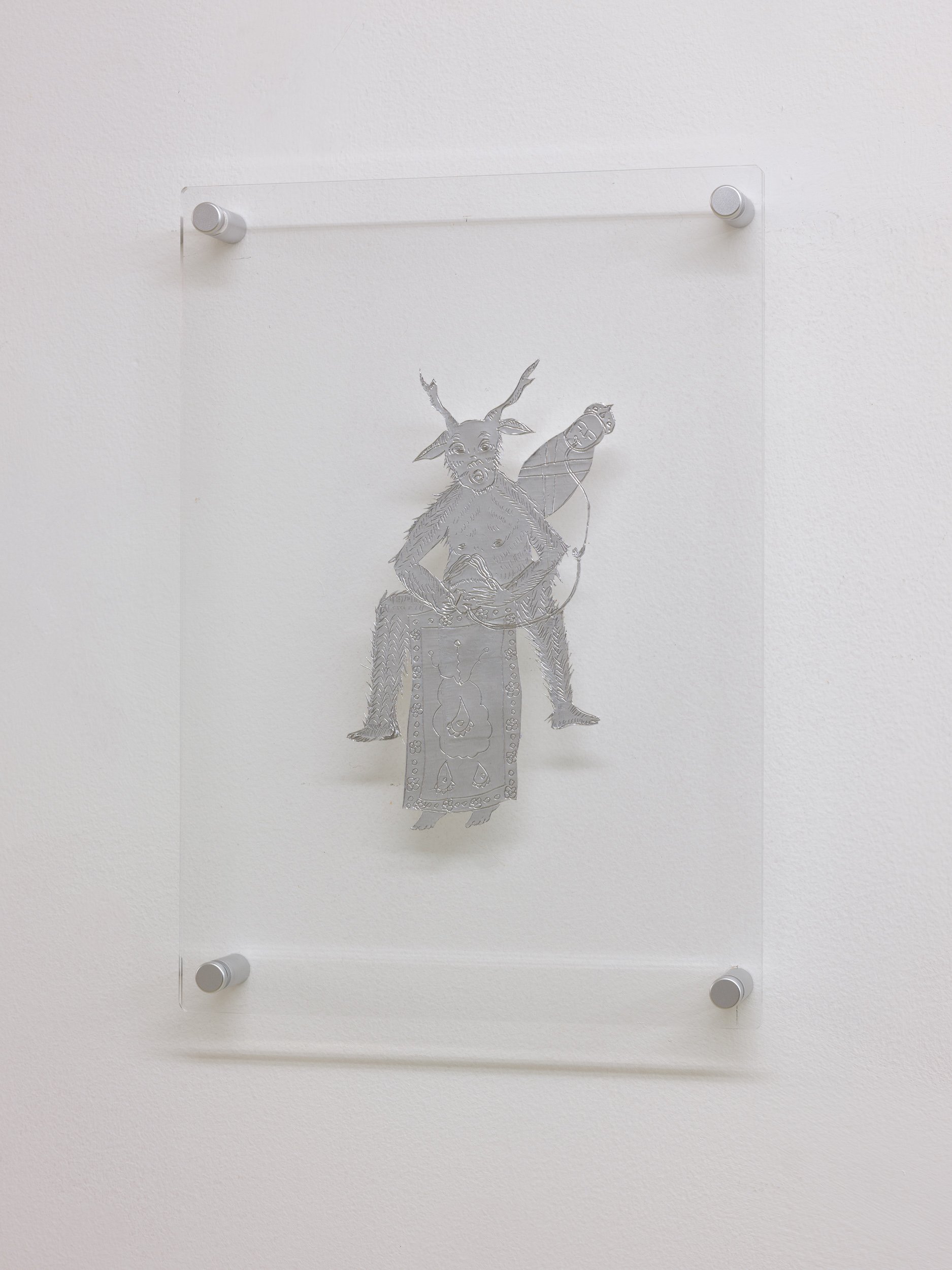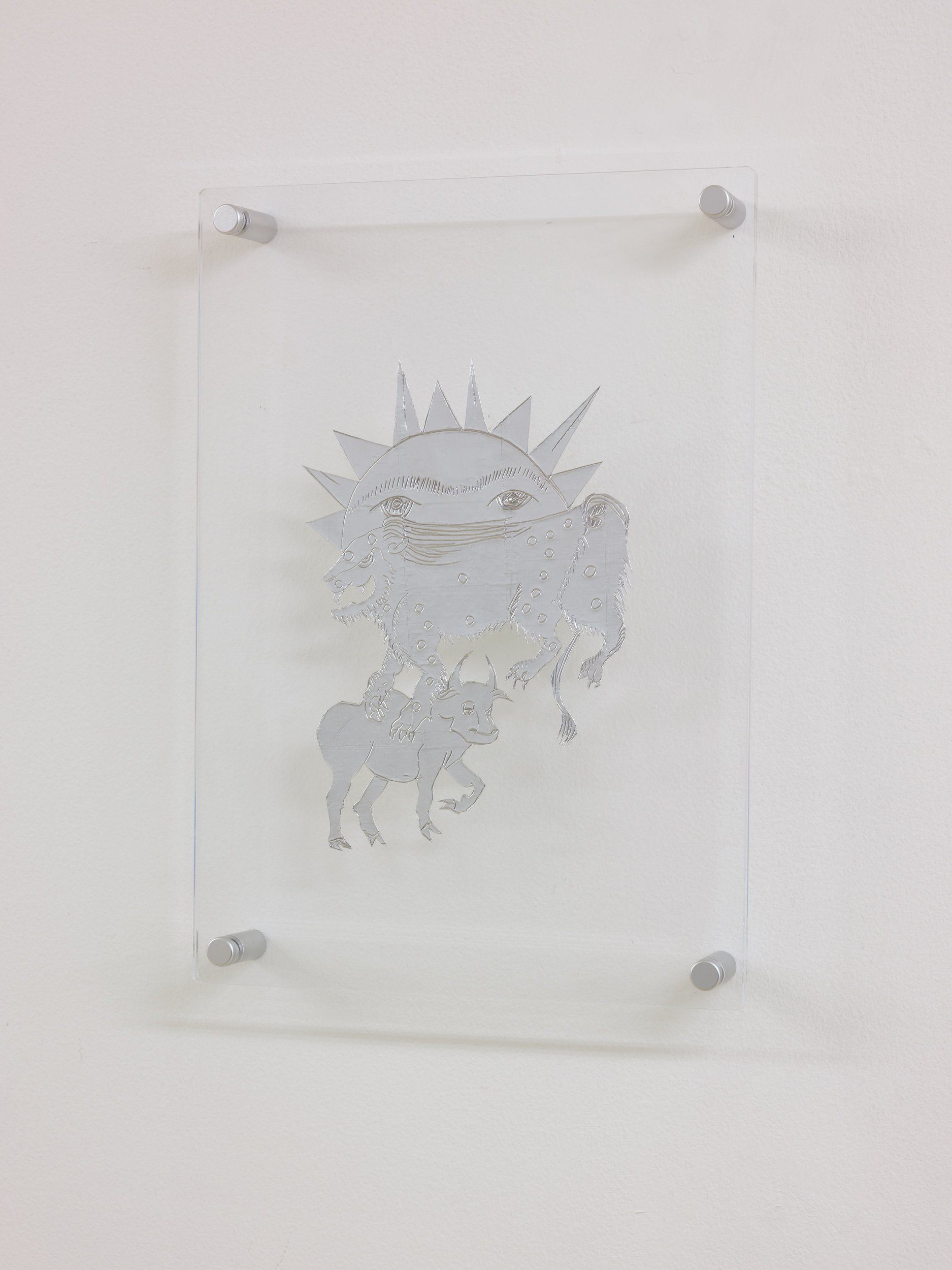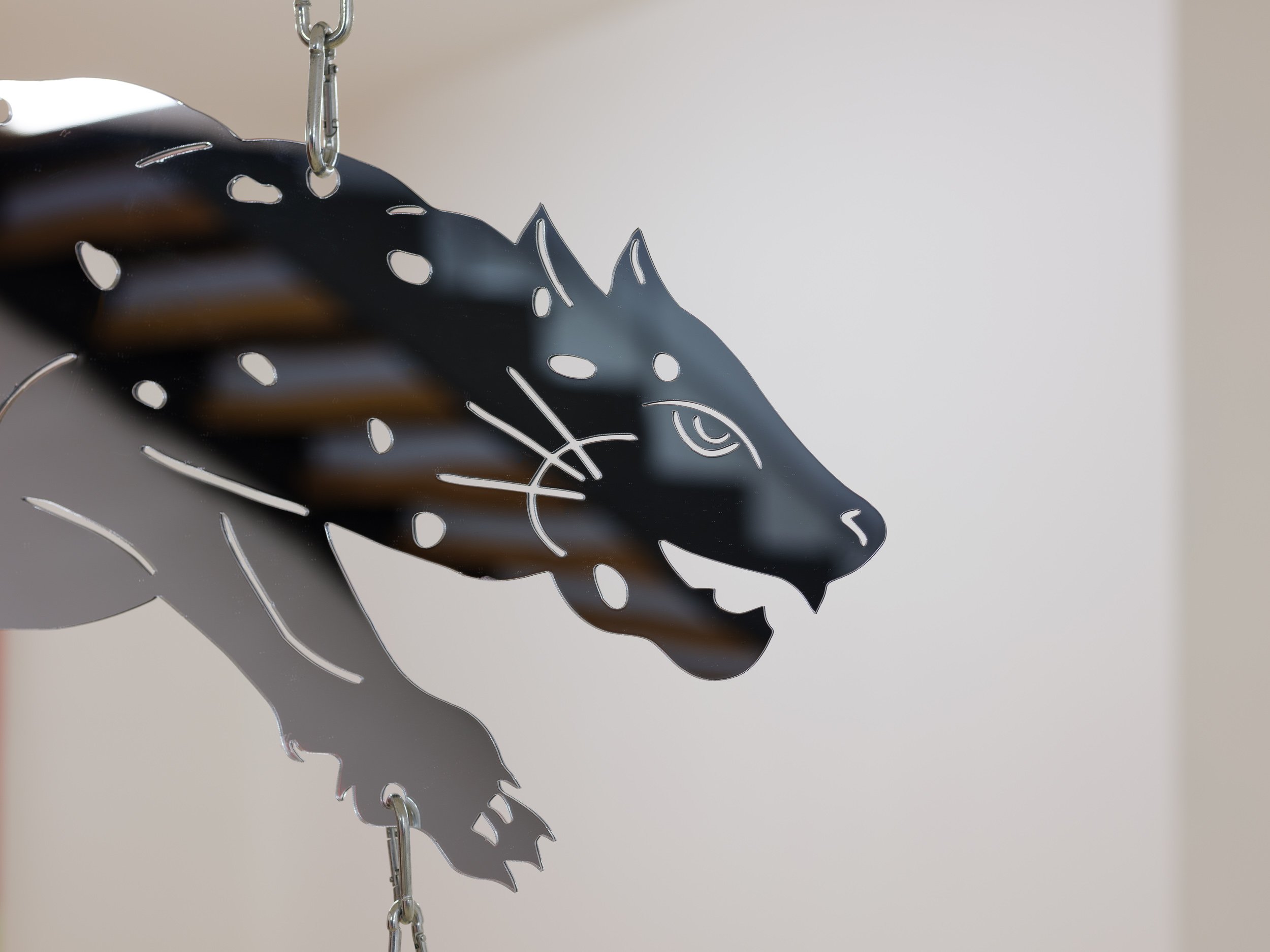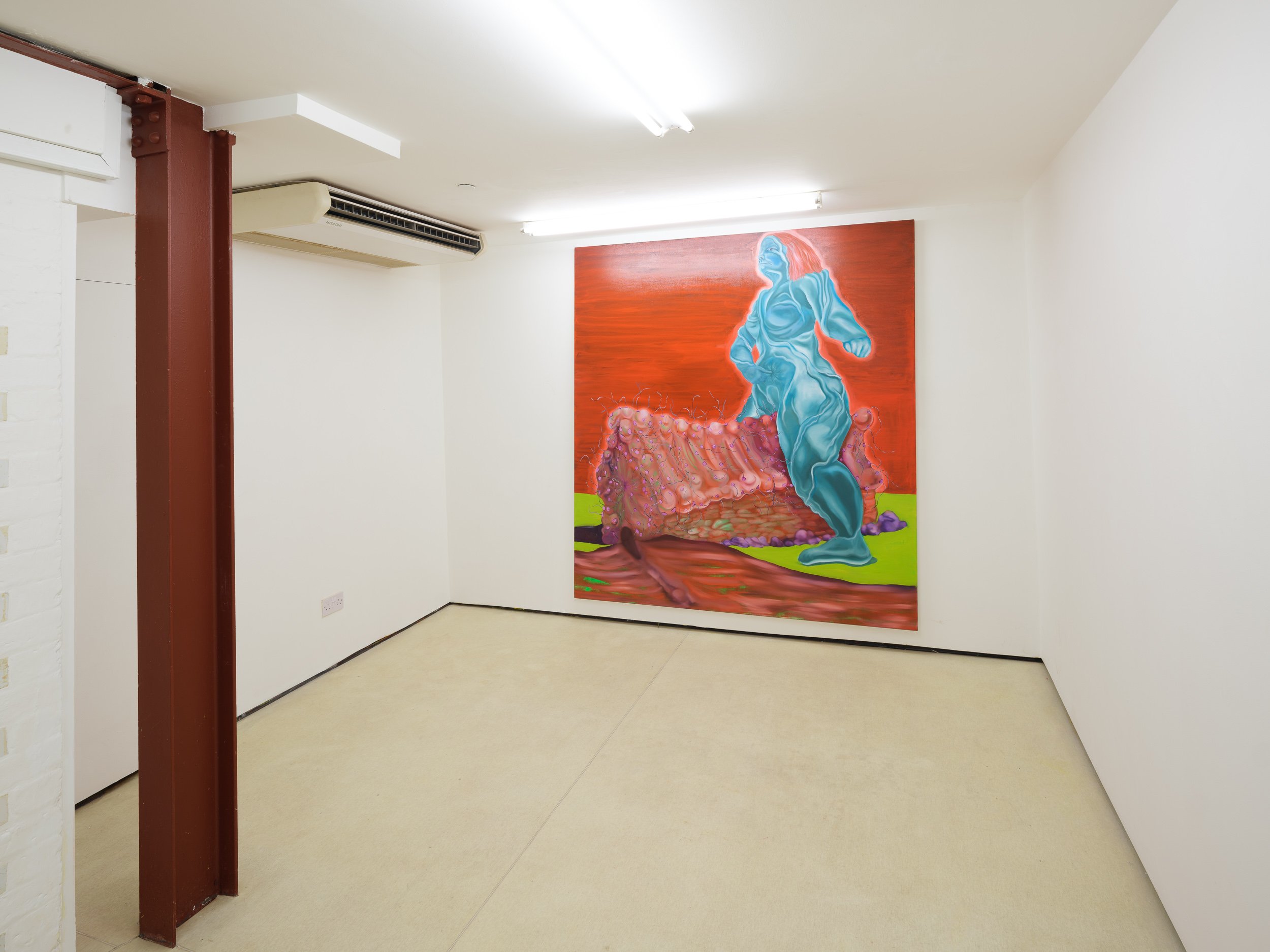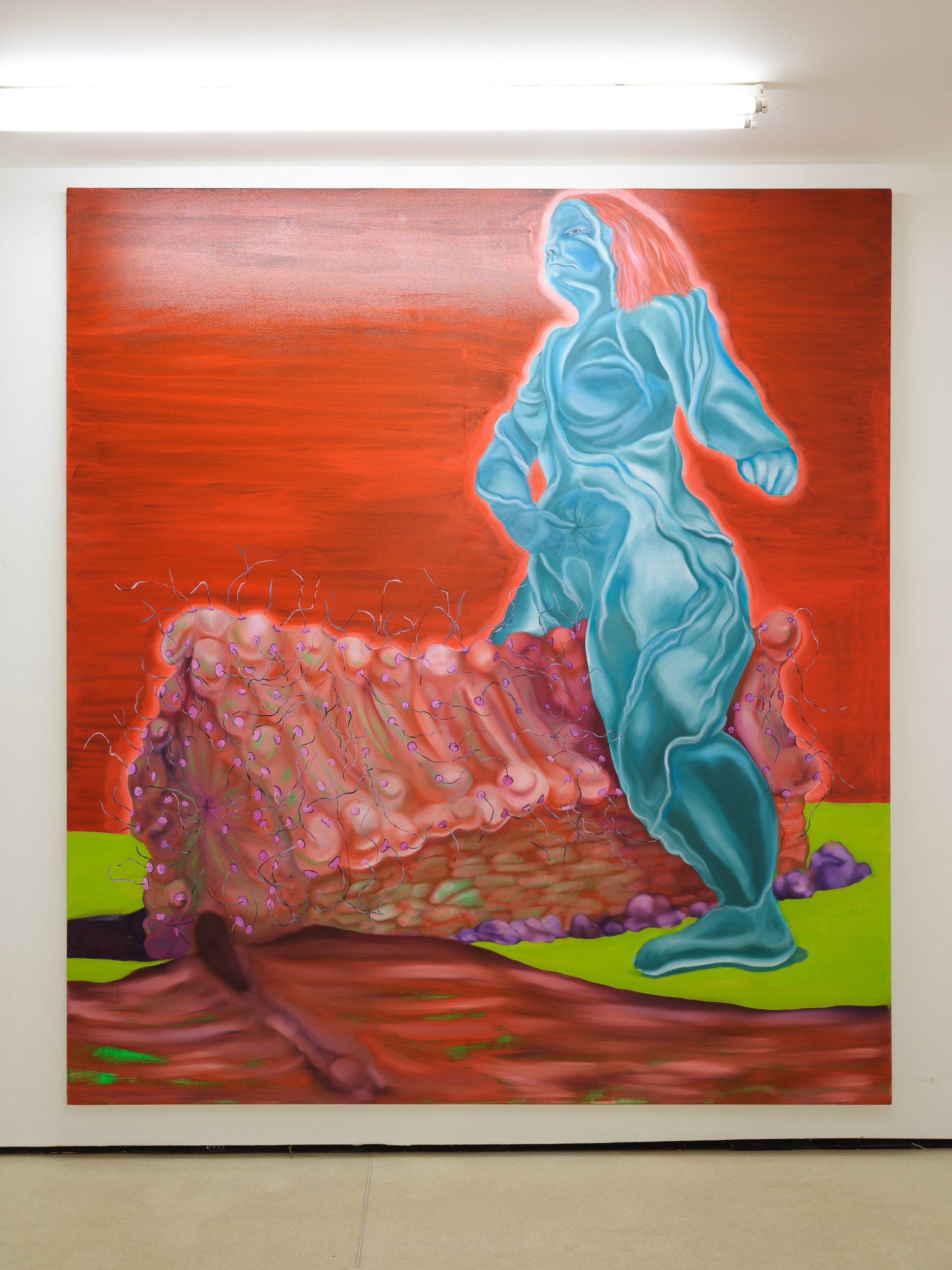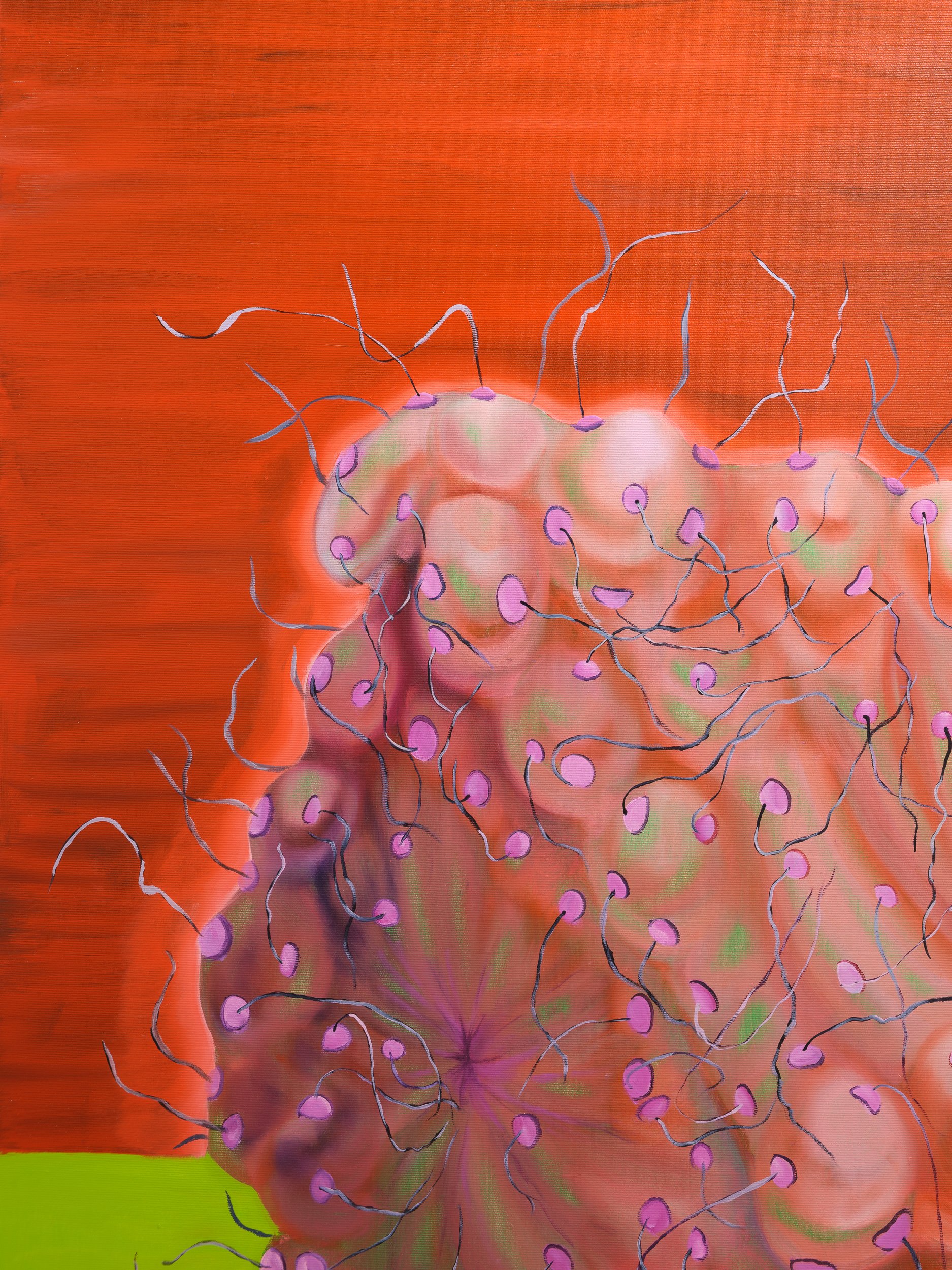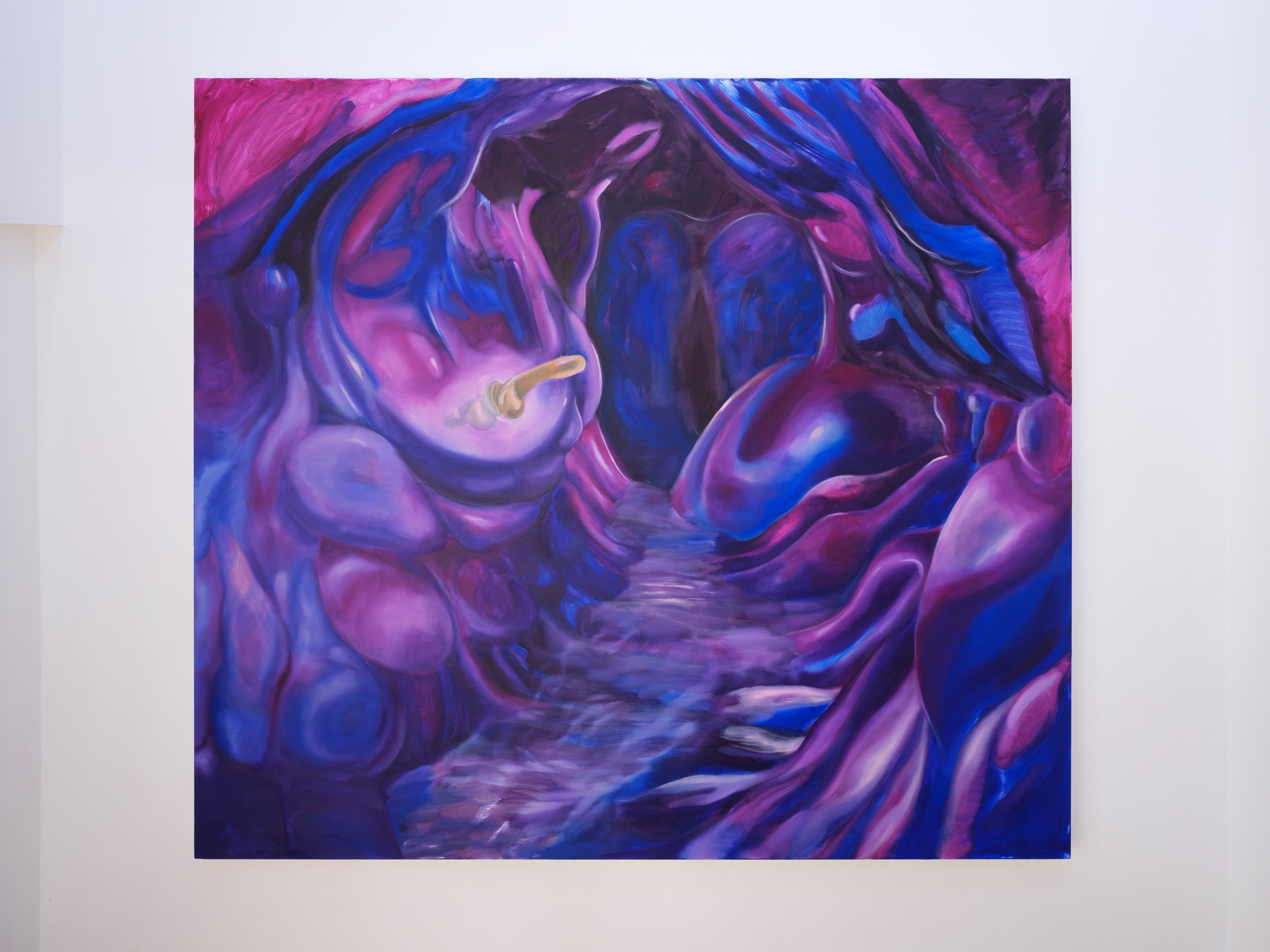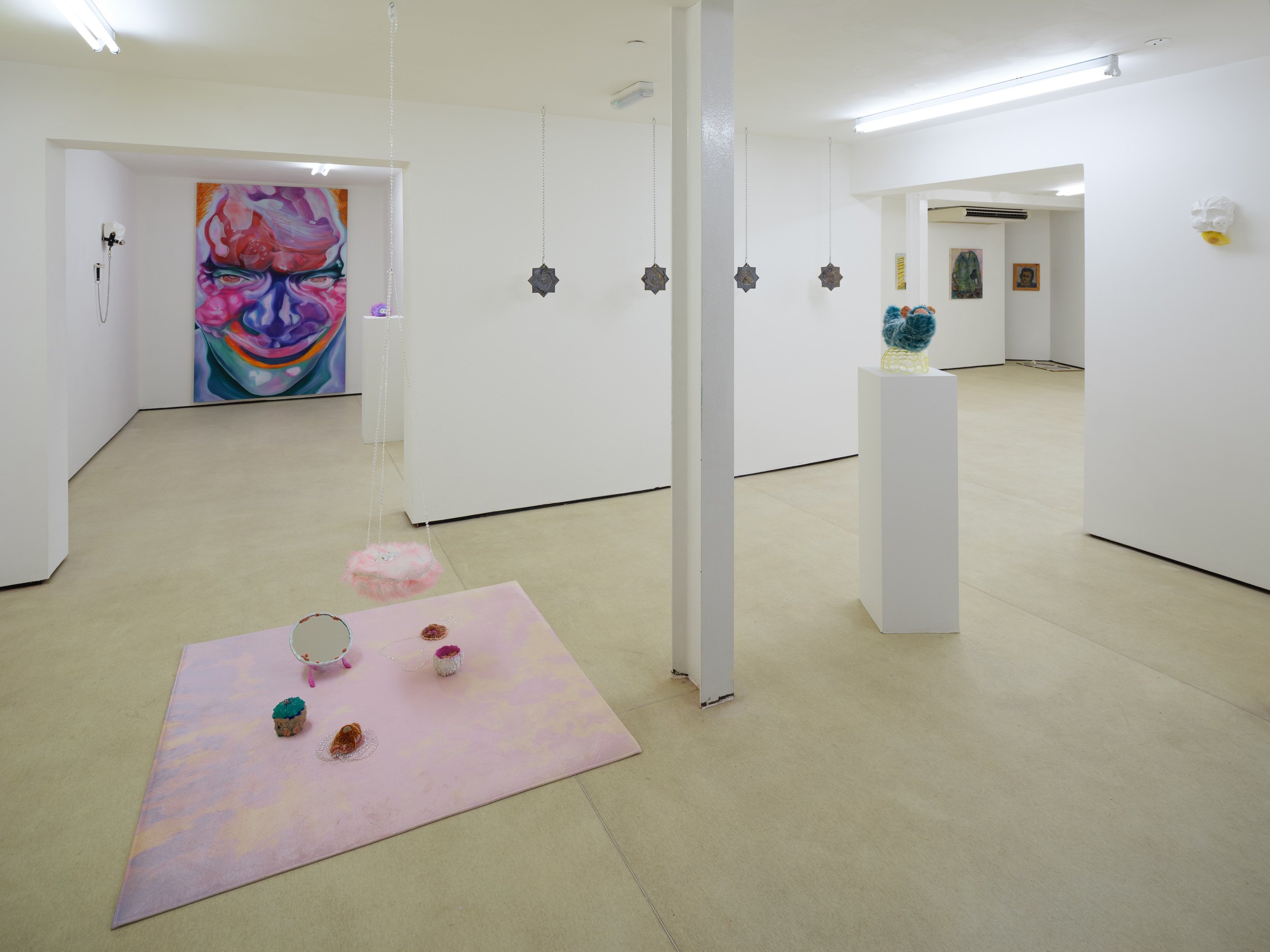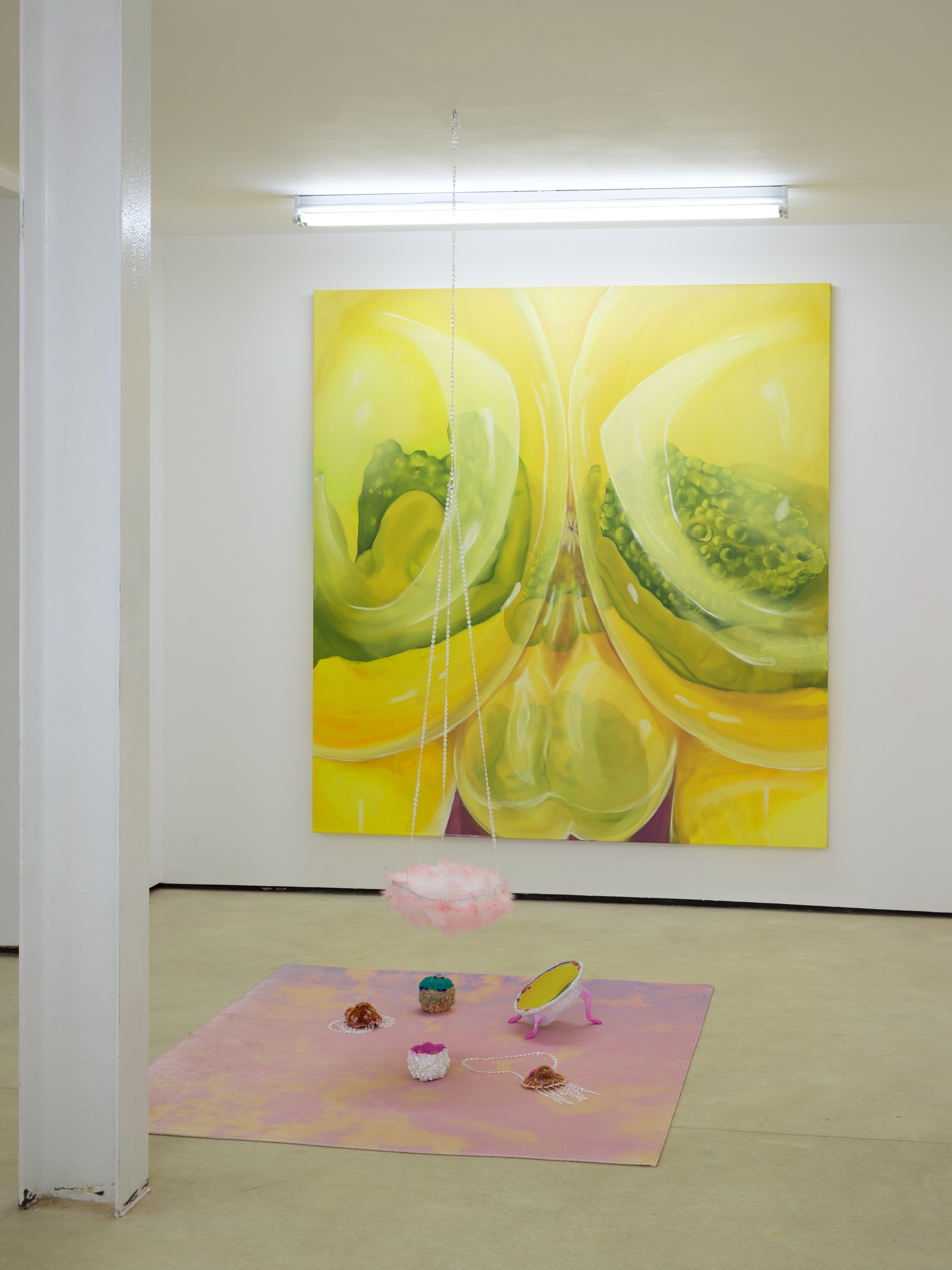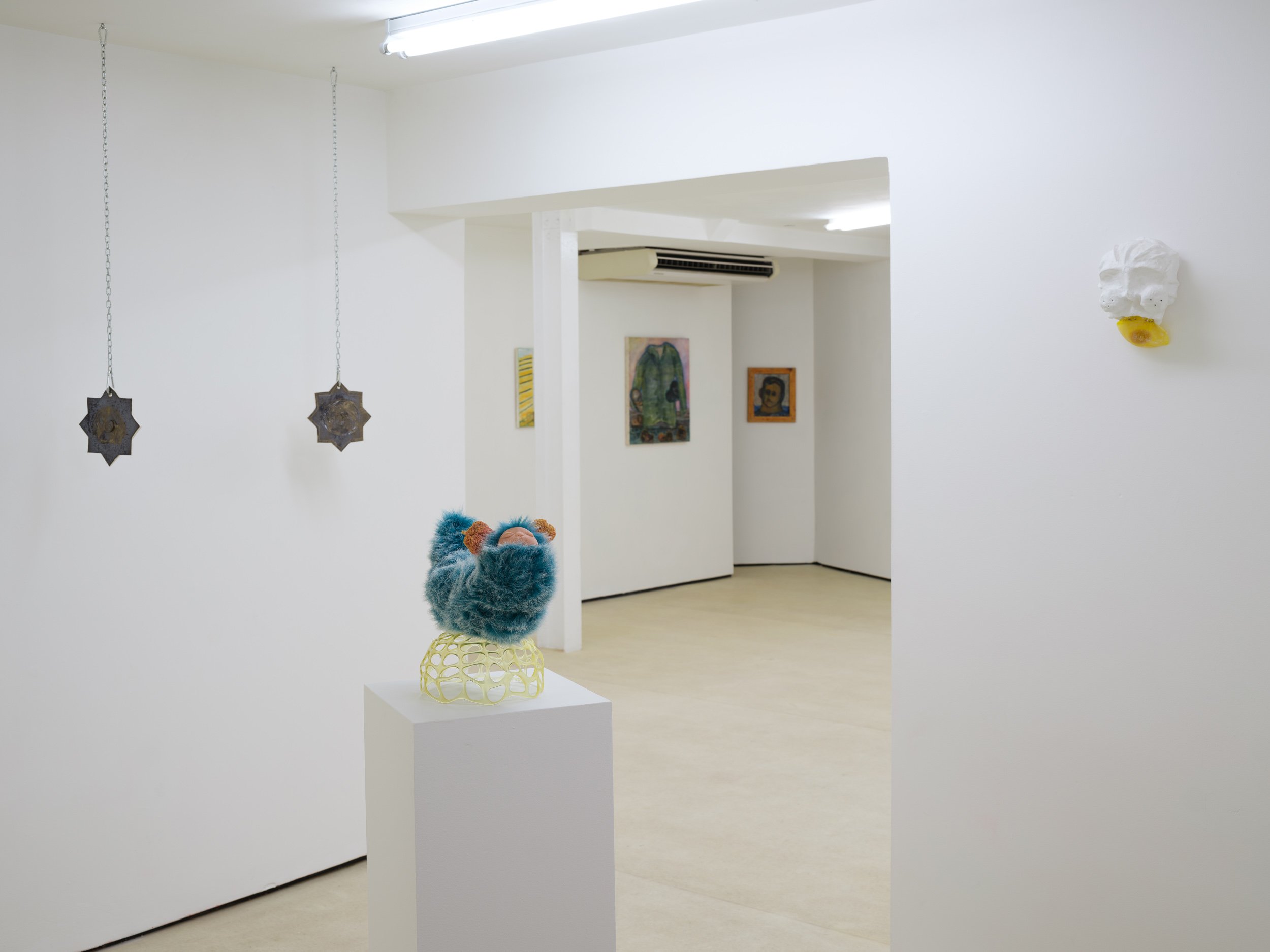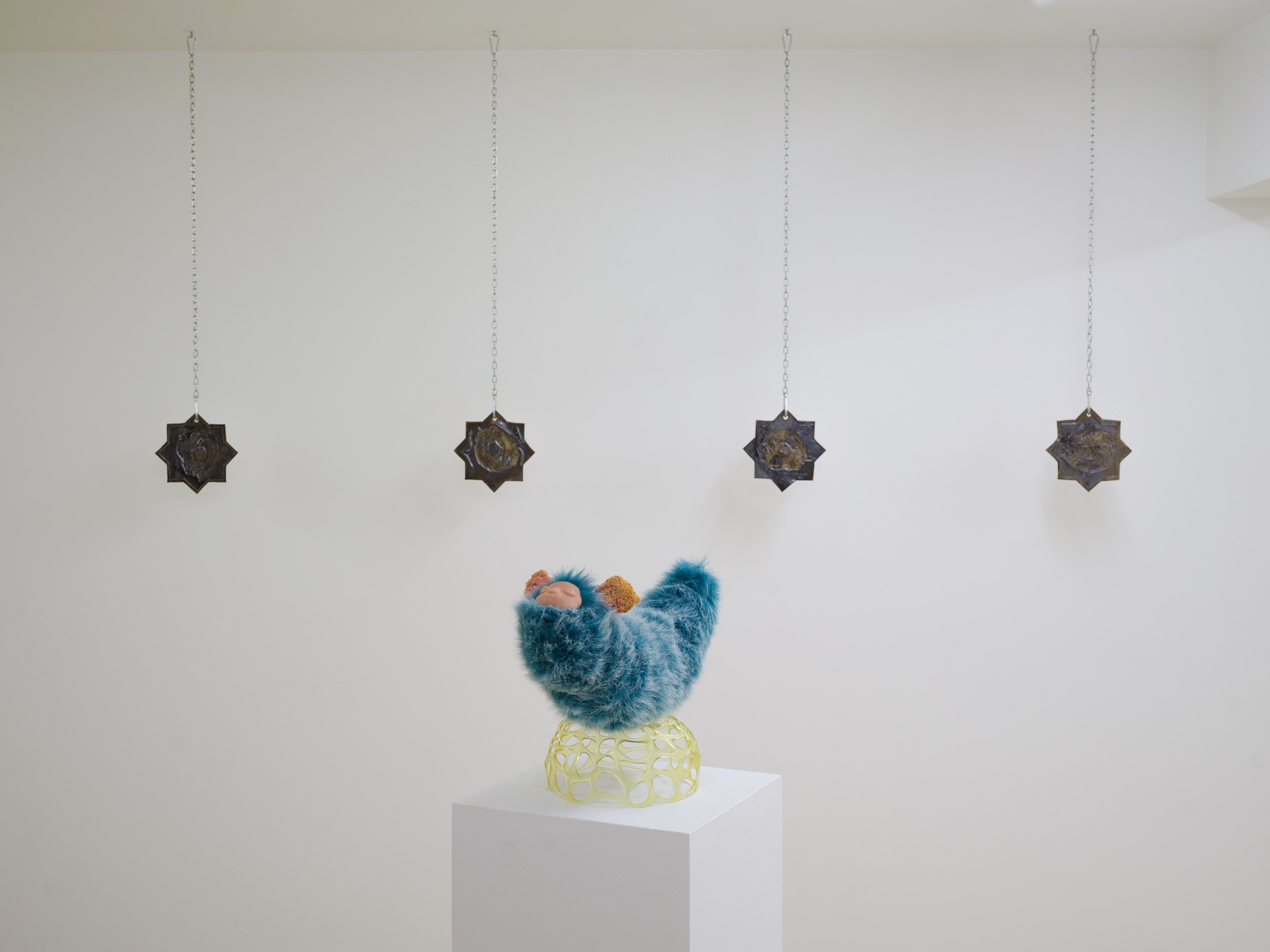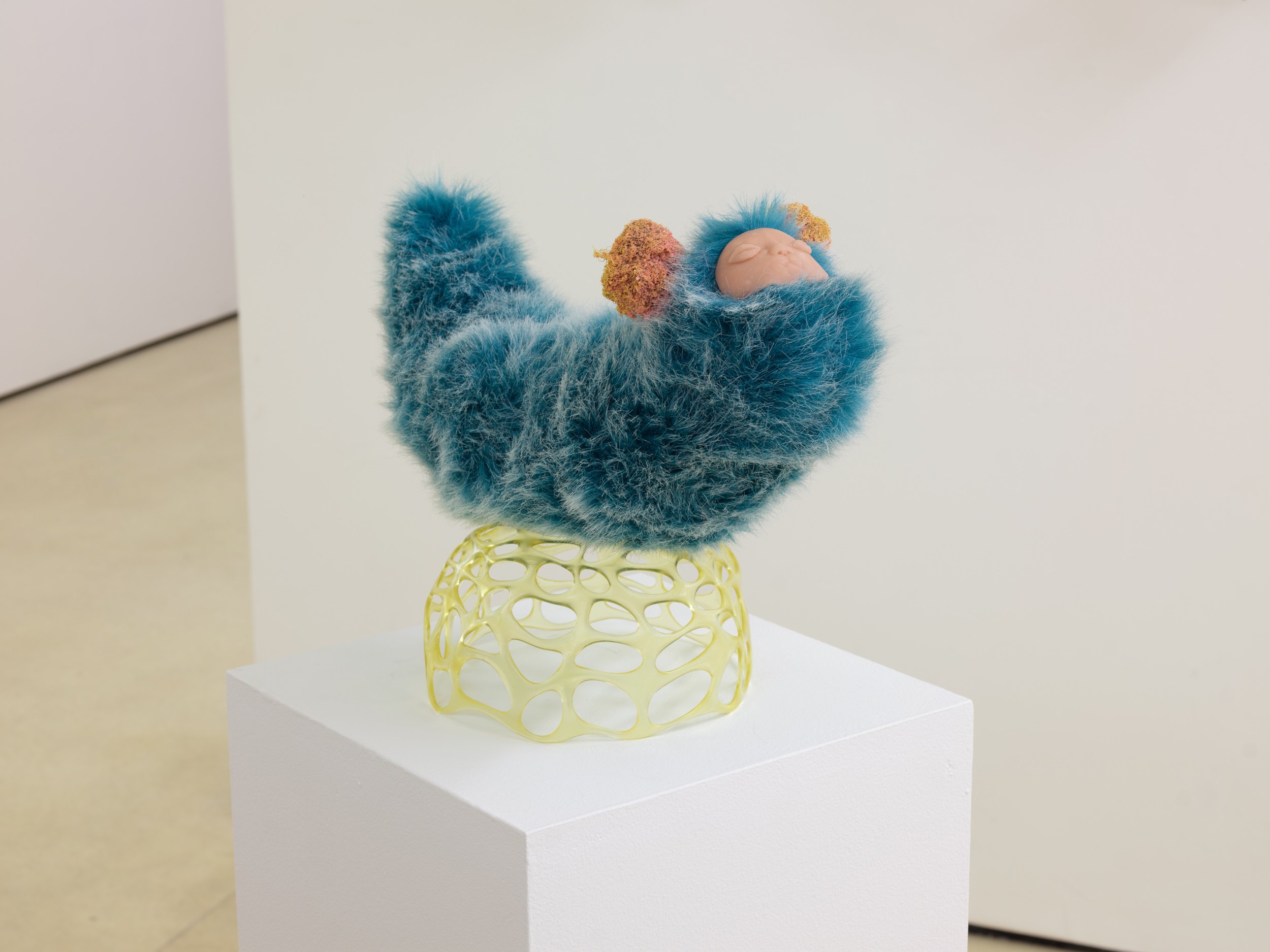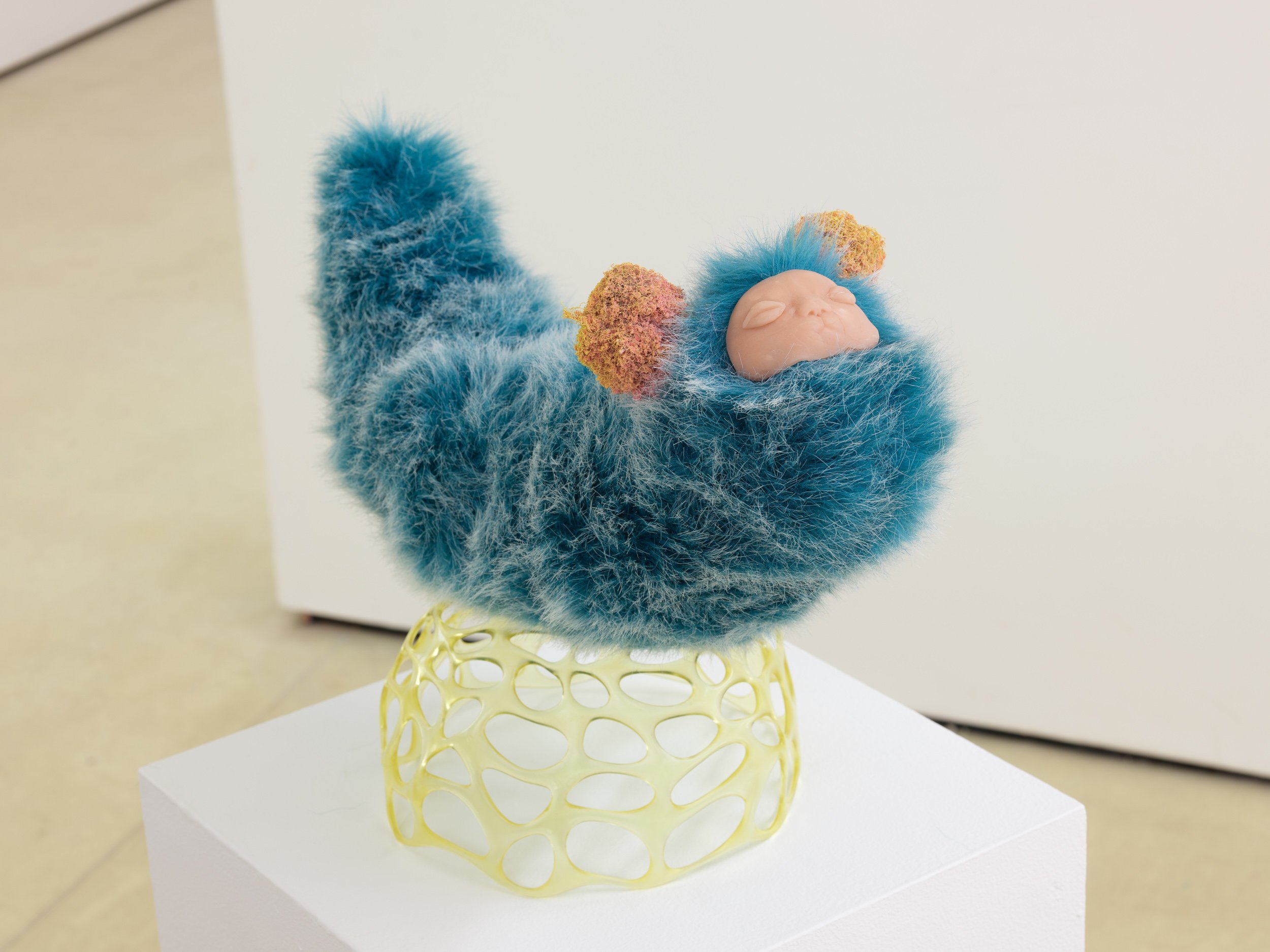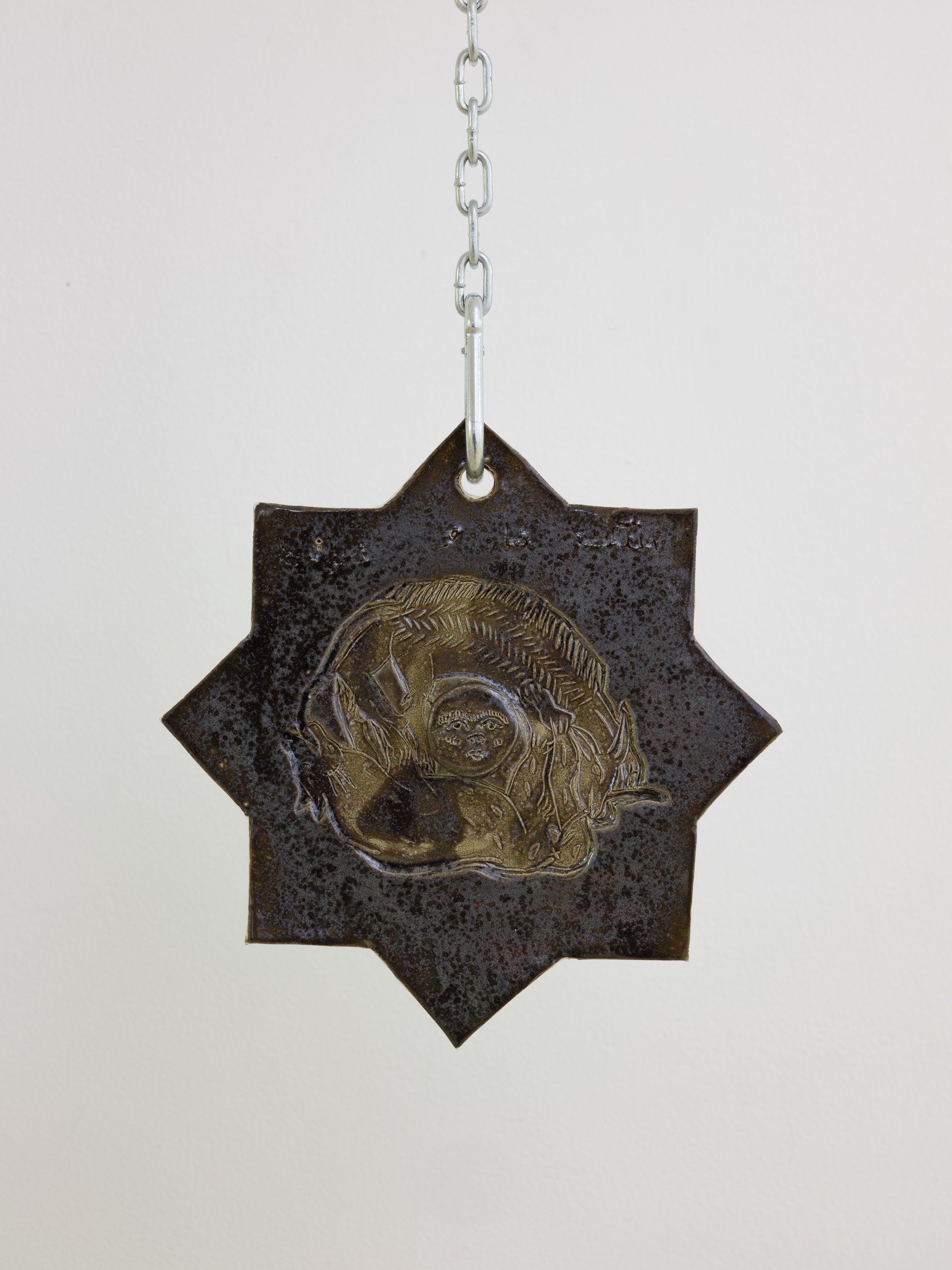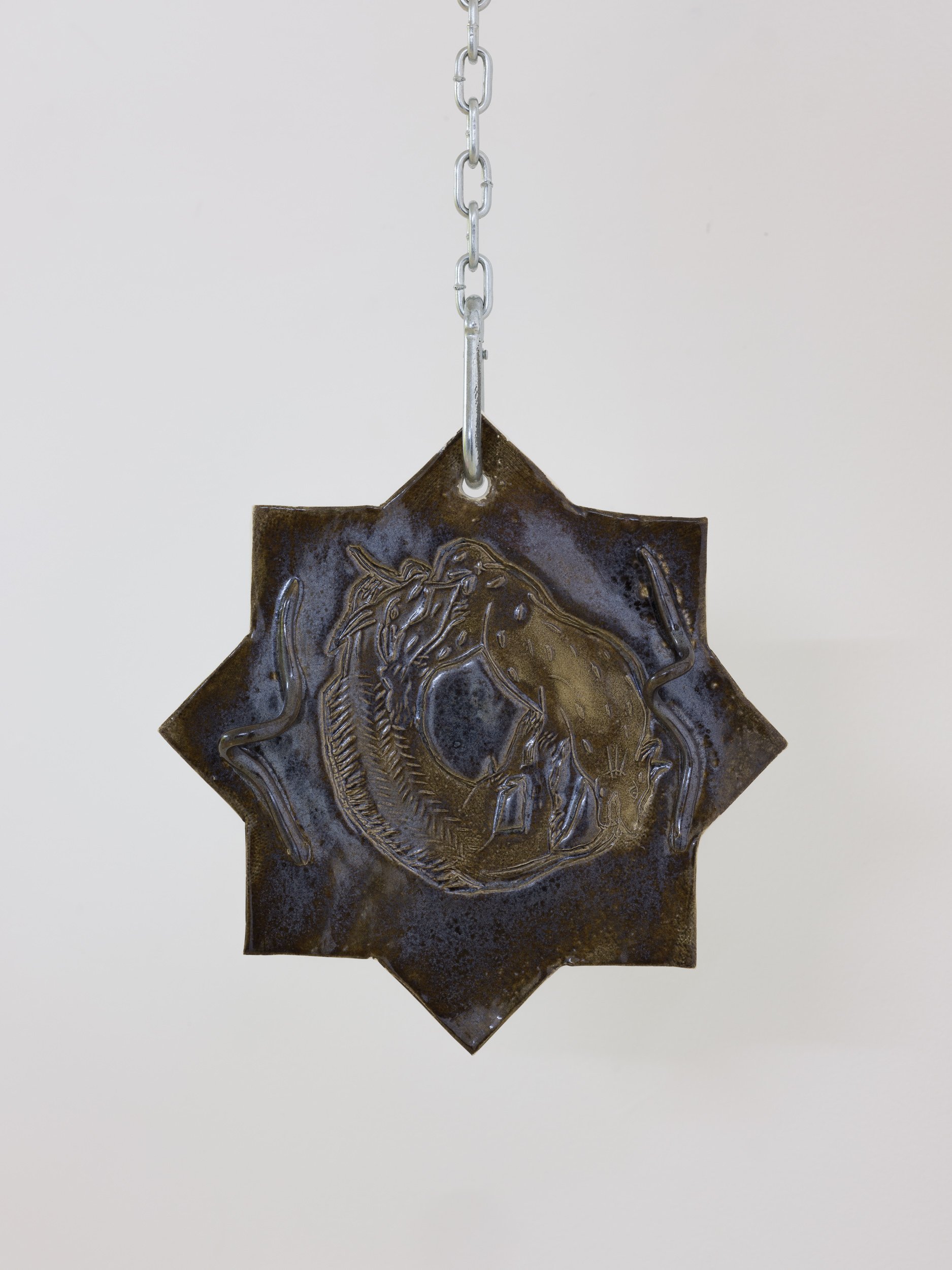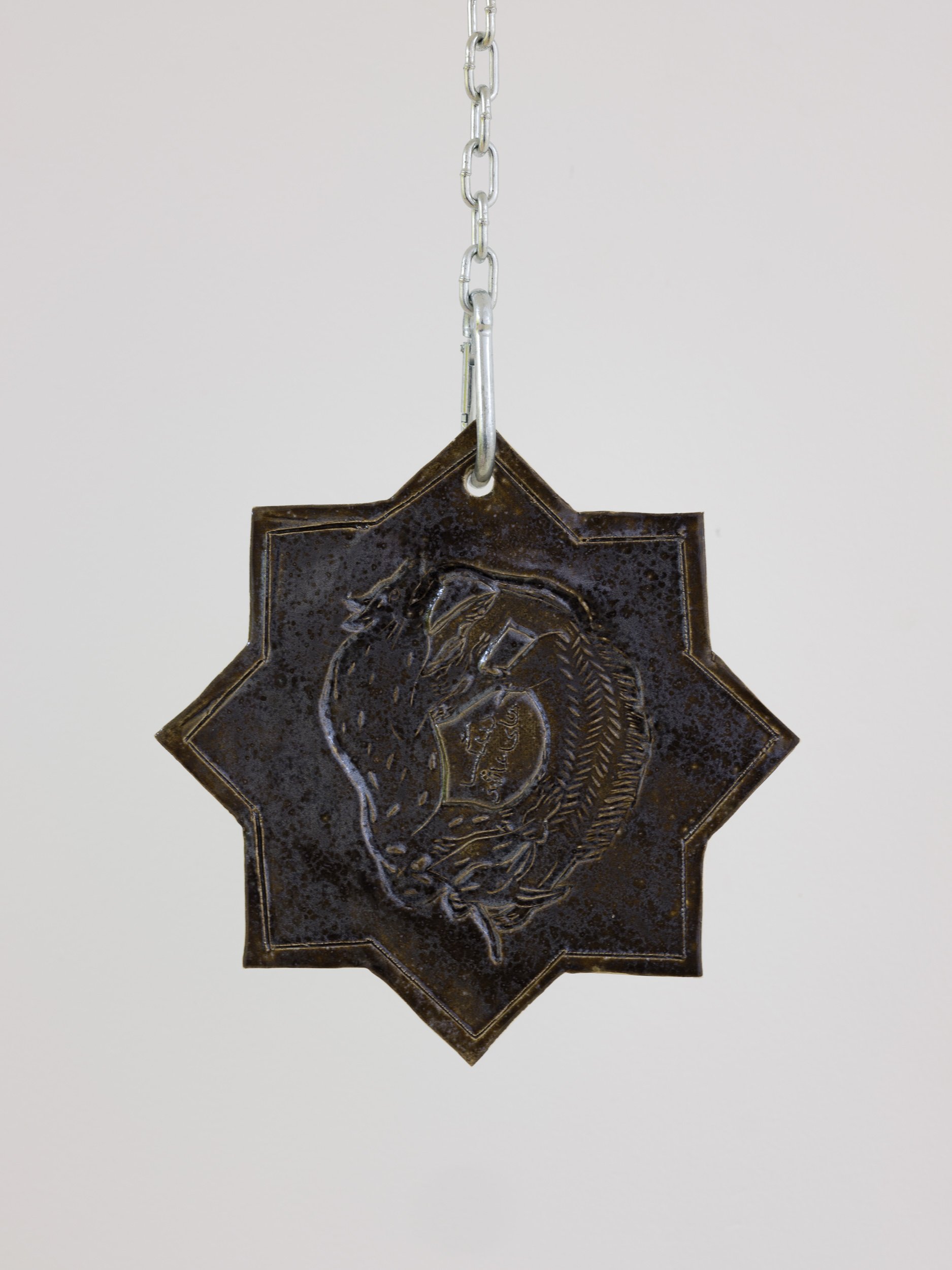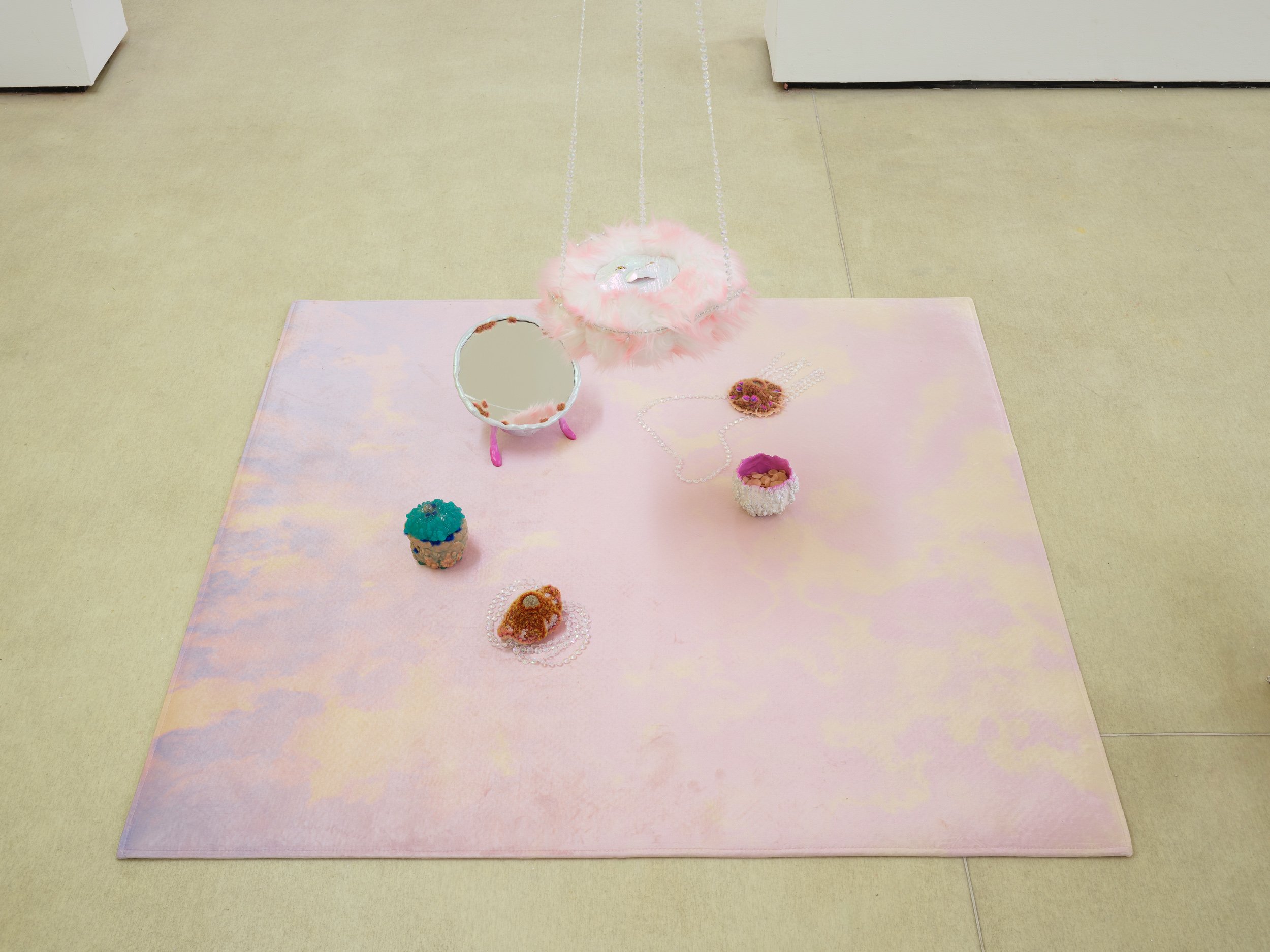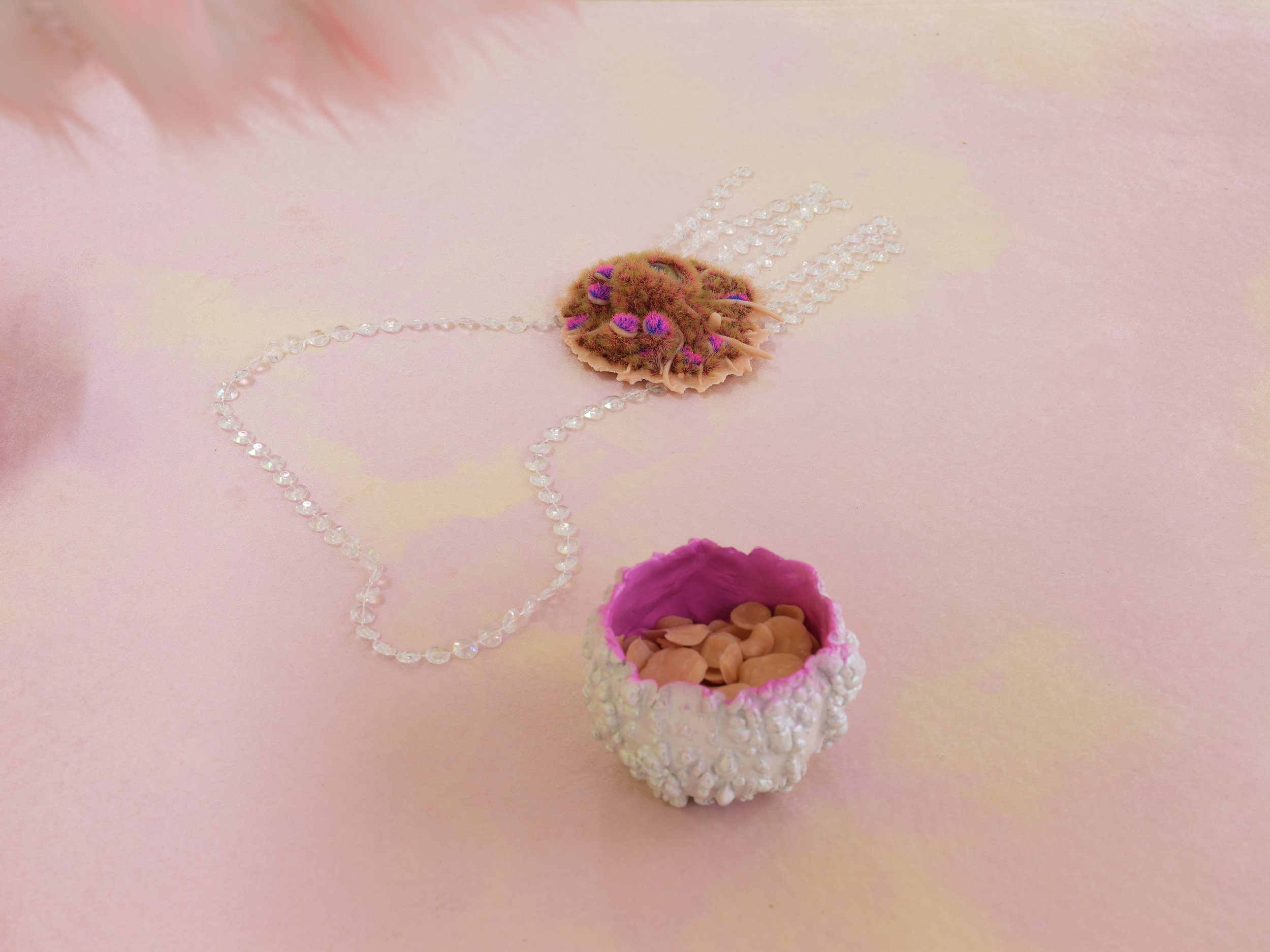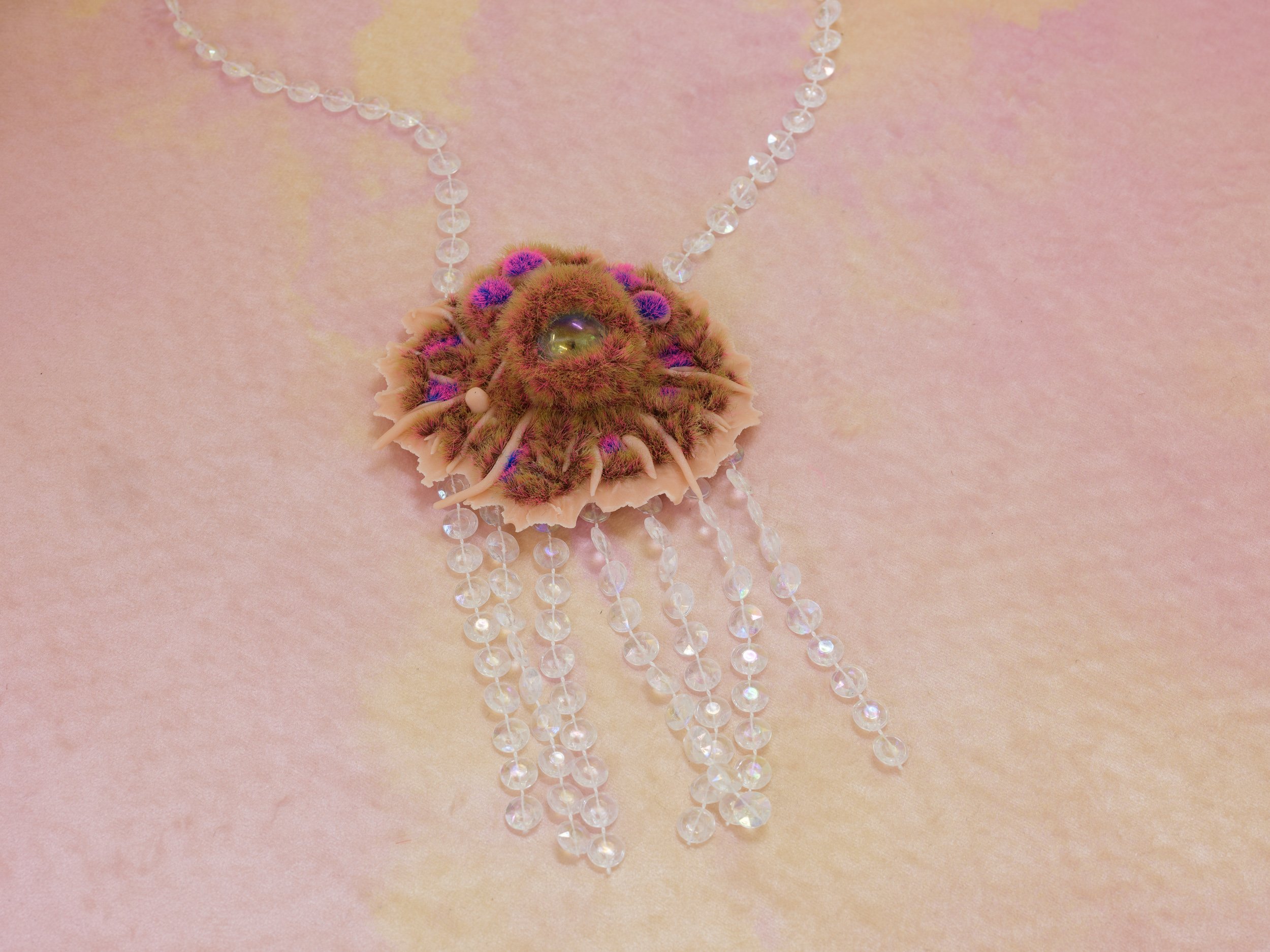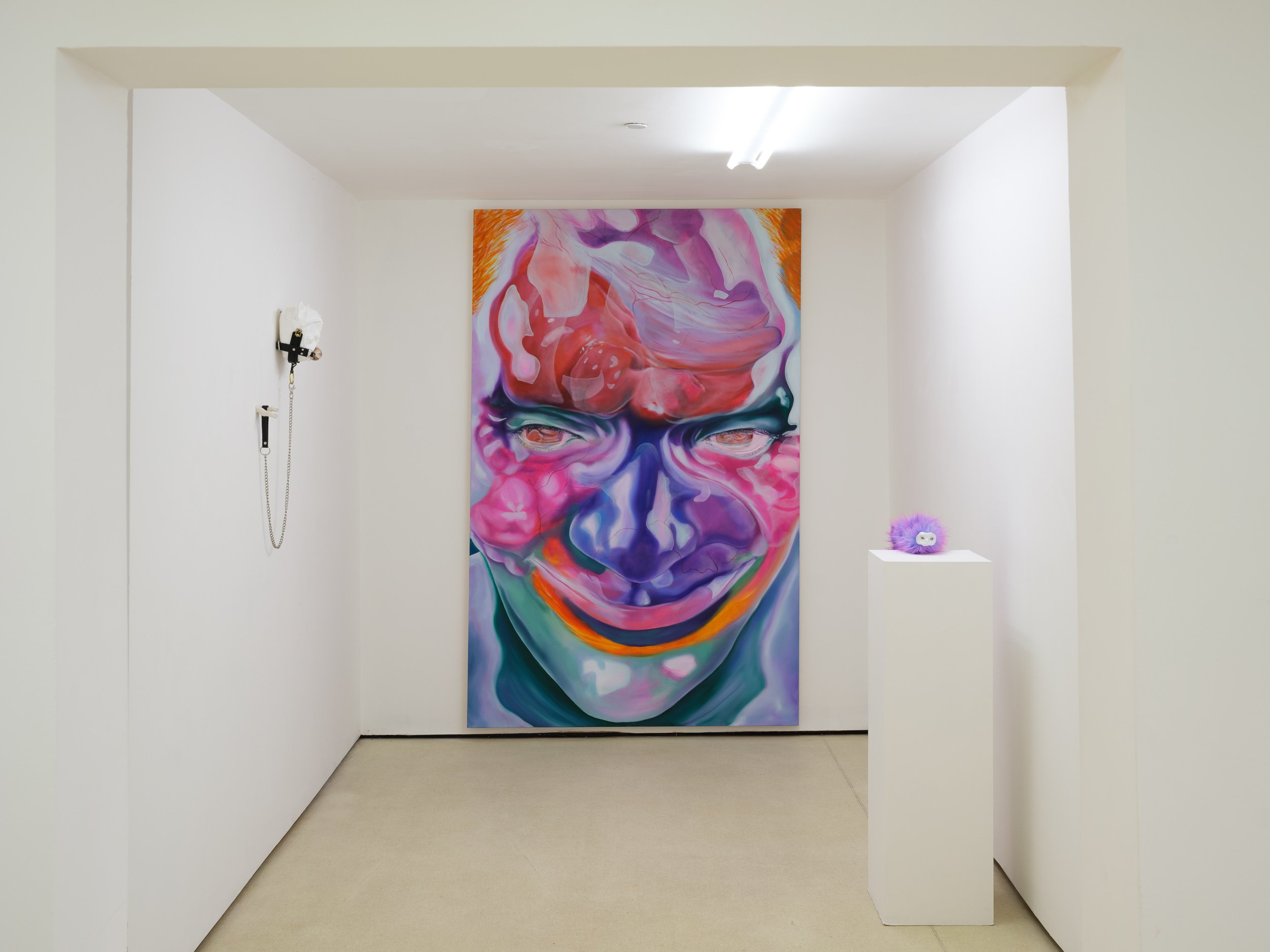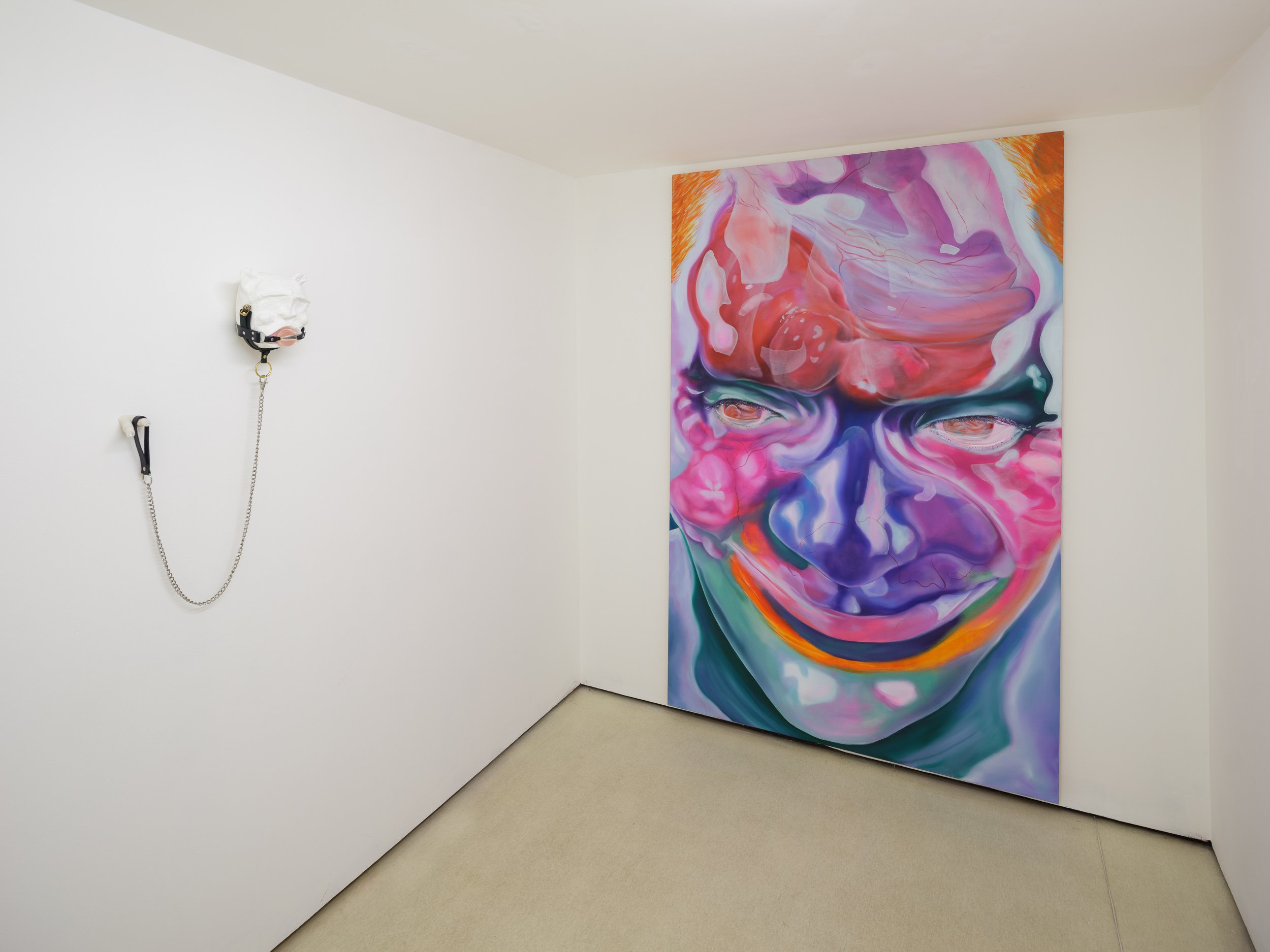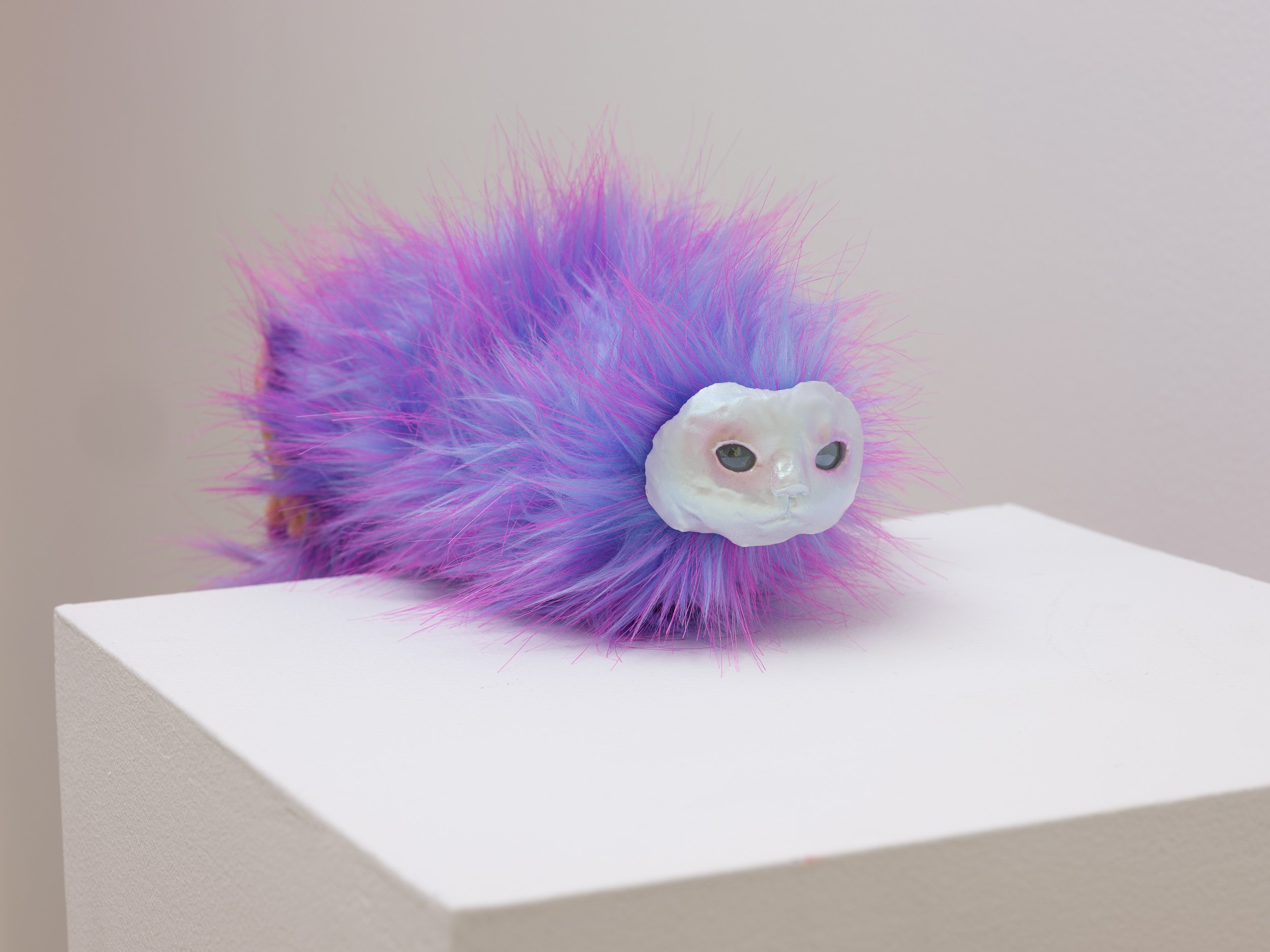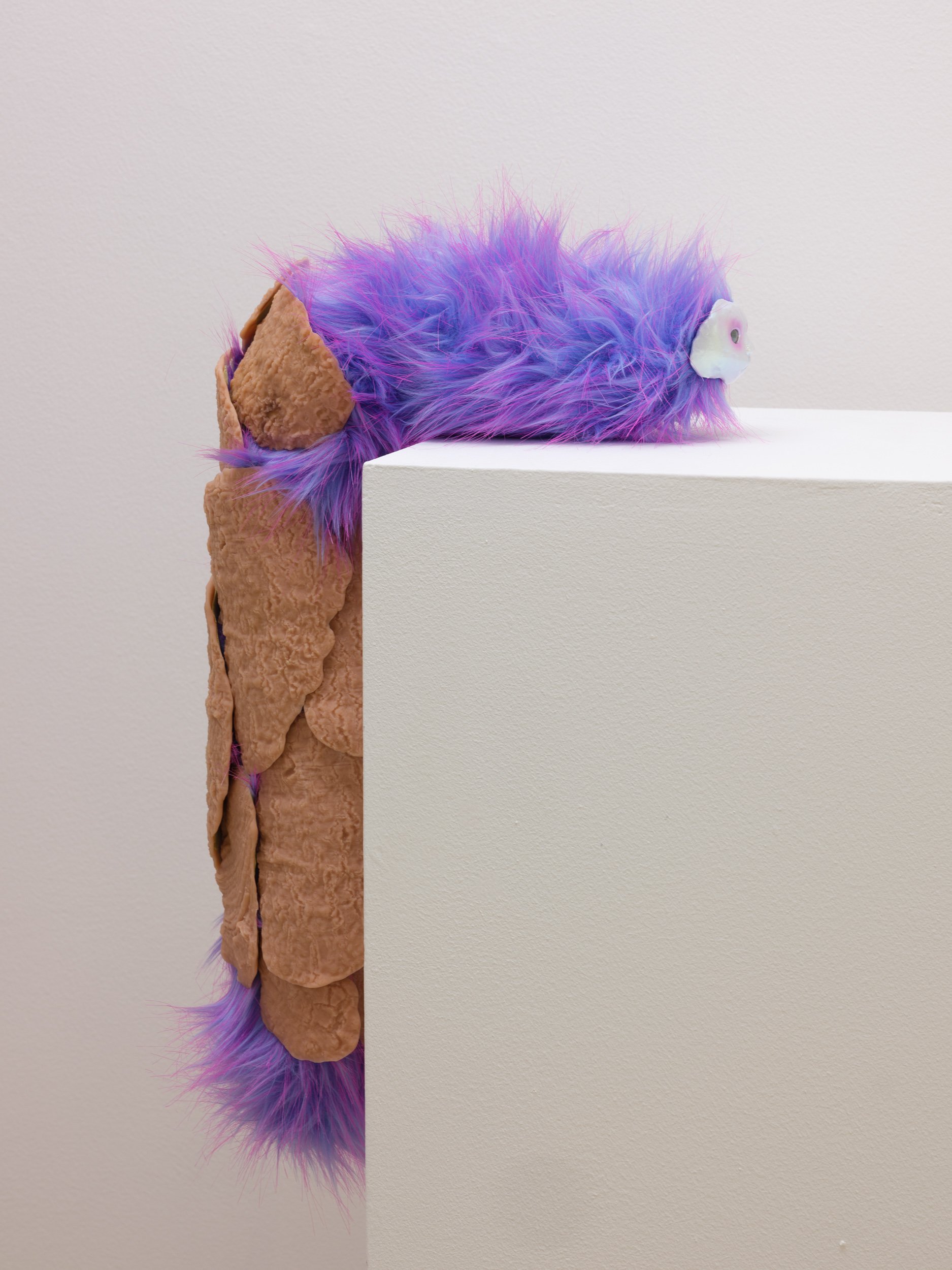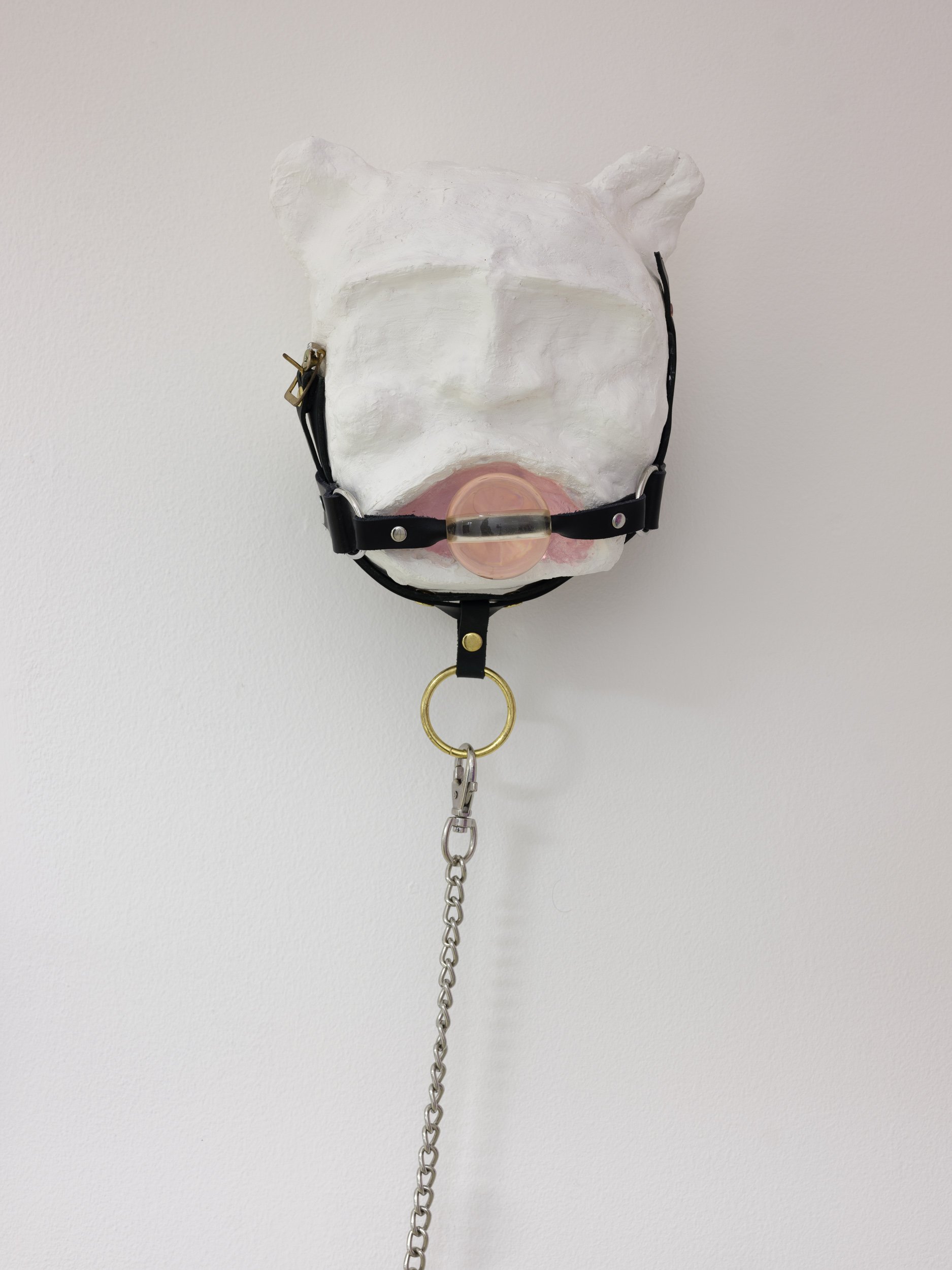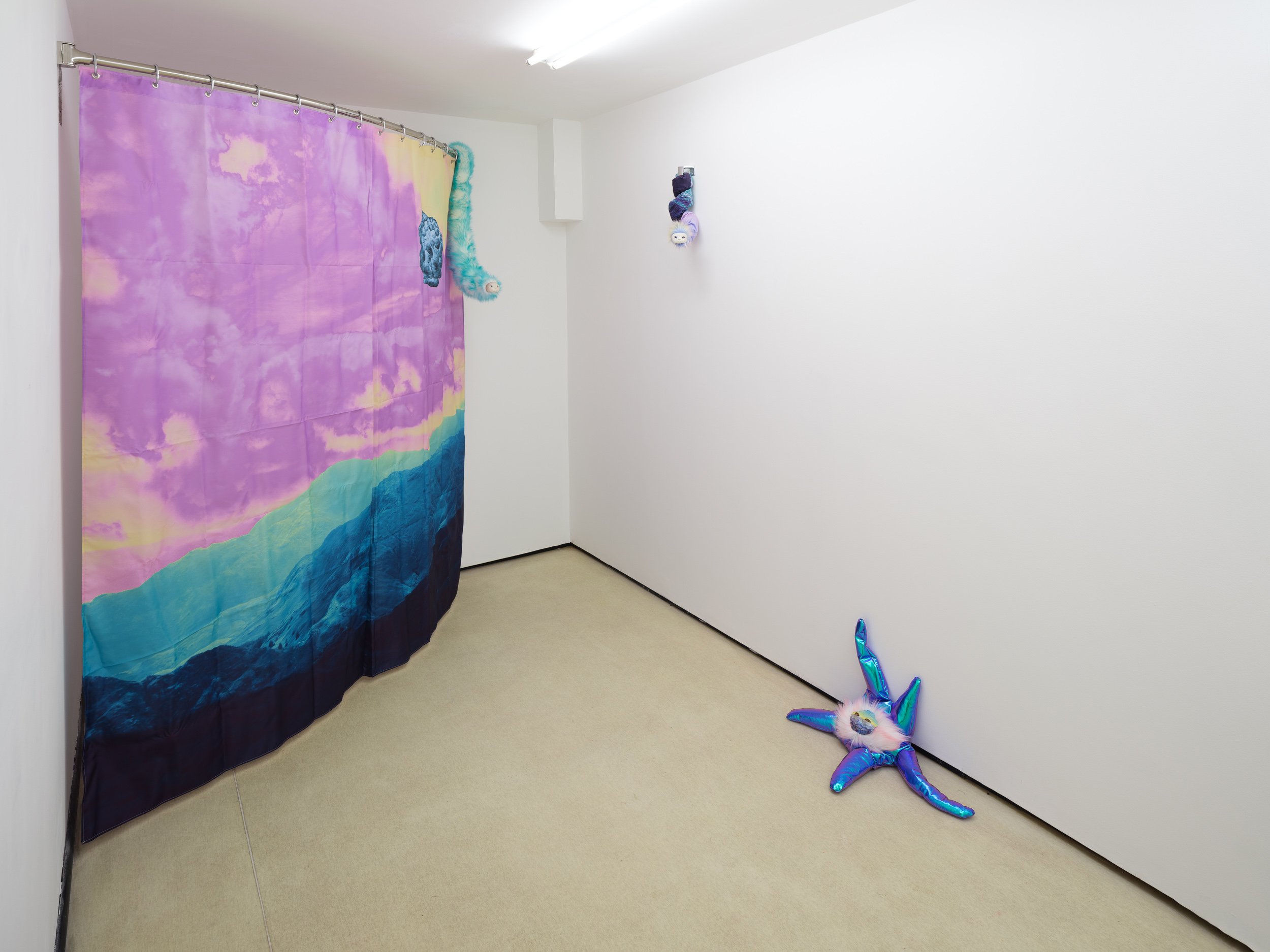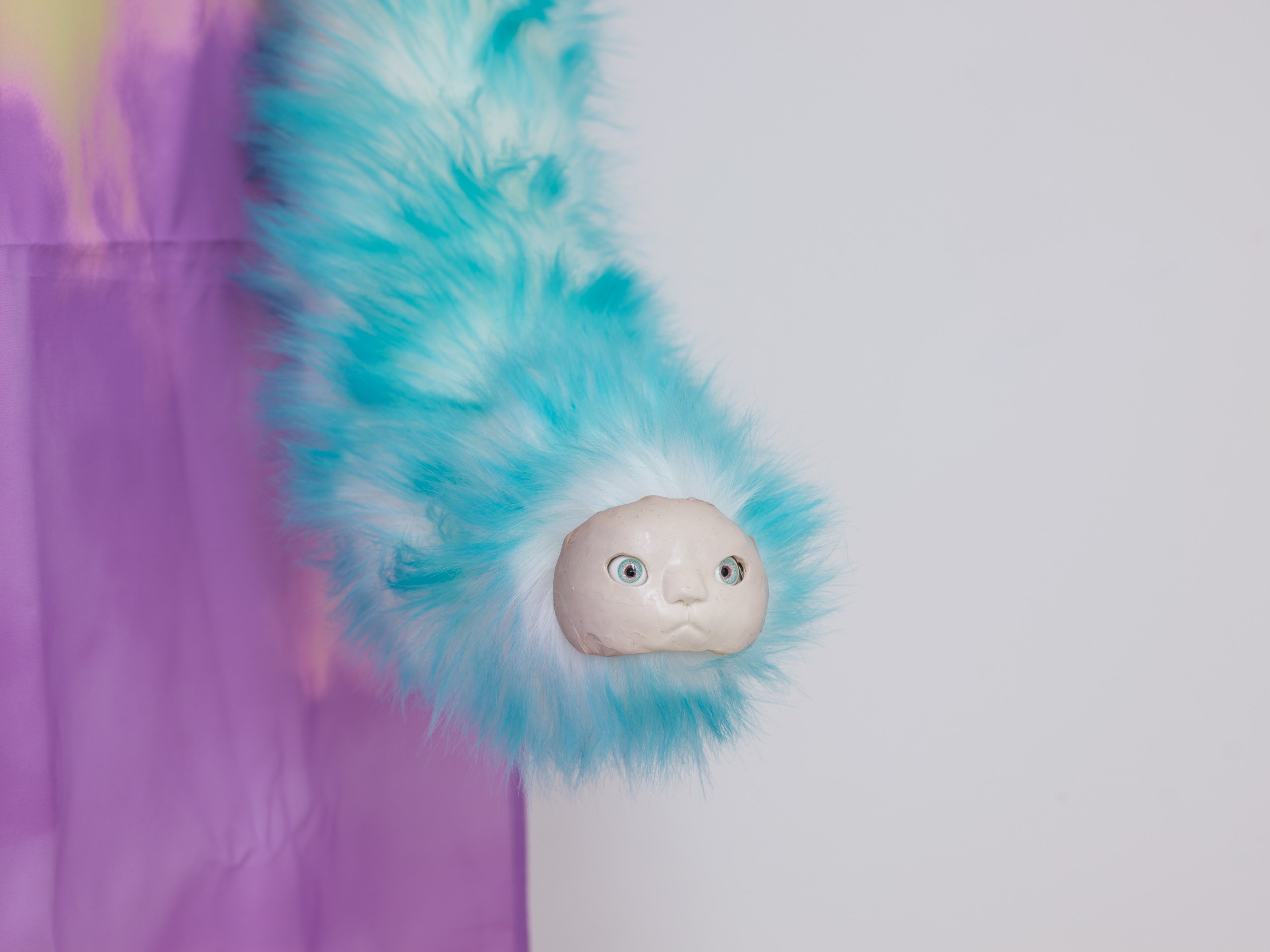Perishing Thirst
Perishing Thirst is a group exhibition of works by Katayoun Jalilipour, Kenji Lim and Sophie Spedding. The idea of thirst as a basic need and function, linked closely to the idea of survival (we must drink or we shall perish), gives the exhibition an intriguing foregrounding. Apt as it is, being housed in a gallery called Quench, Perishing Thirst gives a sense of a hostile environment where resources are limited. It also conjures visions of bodily entropy, where we can visualize the curdled saliva in the corner of a mouth or the slowing down of internal organs as a body fails whilst stranded in a desert. The exhibition brings together three very different artists working across varied media but who are individually interrogating ideas of biological dislocation, bodily transgression and the complicated relationship between humans and nature, the animal world and organic matter. Each artist employs a playful and idiosyncratic approach to their ambitious investigations. The interior landscape of bodies or bodies in a state of reconfiguration are a recurring motif within the exhibition. Sophie Spedding’s paintings often take the viewer inside and outside of imaginary bodily forms through a prism of a fantasy infused, psychedelic colour palette. The paintings are often on an intimidating scale, like the imagined mouths, gullets and orifices are swallowing the viewer whole. Sophie talks about the undercurrents of sexual desire embedded in the work that is connected to being physically swallowed by a larger being. Kenji Lim on the other hand often creates imaginary beings on a smaller scale that entice you in with their furry bodies and oversized eyes. Sometimes reminiscent of a Jim Henson creation, he talks about the complicated history of anthropomorphisation and animism and how different cultures employ these concepts while wanting to create a culturally independent language of his own. He is also very interested in the concept of the ecosystem and how it functions as one object, but one that is so endlessly interconnected it has no understandable boundary. He applies these ideas to his work, in the assemblages and installations he creates, taking inspiration from both the animal kingdom and the utopia of an Ikea catalogue. Katayoun Jalilipour is also using animal motifs in the new body of work presented at Quench. Focusing particularly on canines and felines who are in mid-action, such as fighting or feeding, and reframing through a queer lens exploring the line between violence and intimacy, and how it links to the wider societal issues we face as people. Born in Iran, Katayoun draws on traditions in Islamic art particularly from the imagery found in traditional tiles and rugs and how they have been drawn anew to the strangeness and surrealism they often depict. They are presenting their own series of tiles, as well new drawings, sculptures, and an audio work, and while taking inspiration from Islamic folk imagery they are creating a new visual symbology of their own.
Katayoun Jalilipour
Katayoun Jalilipour is an Iranian-born multidisciplinary artist, writer and lecturer based in the UK. Through humour, provocation and storytelling, their practice uses the body as the subject to talk about race, gender identity and sexuality. They use speculative histories and fictions to re-tell stories through a queer lens.Katayoun works in a variety of mediums including moving image, installation, drawing, text, sound and live performance. They have an ongoing body of research looking for fragments of queerness hidden in Iran’s Qajar era, specifically stories that centre intimacy, eroticism and gender nonconformity. Katayoun is an associate lecturer at Central Saint Martins.
Kenji Lim
Kenji Lim is a British artist based in Essex and born in Singapore. He works through sculpture, video, digital collage, installation, and painting, to produce objects, animations, and images that operate both individually, and collectively as installation and assembly. Lim’s work reflects and refracts the experience of landscape and the natural world through the prisms of culture, myth, philosophy, and the metaphysical; returning the gaze of Western cultural norms through the eyes of other-than-human actors. Partly ecological and archeological, in turns melancholic and tongue in cheek, he navigates alternative modes of seeing, understanding, and interacting with the world and its inhabitants.
Lim studied Sculpture at the Royal College of Art, London (MA - 2017-2019); and the Ruskin School of Art, Oxford University (BFA - 1999-2002). He is currently an Acme Work/Live Artist at High House in Purfleet, Essex. Recent exhibitions include Shivering Cloud at Galerie Reinthaler, Vienna; Situated Deities at The Stone Space, London; and There’s a Hole in My Neighbourhood at The London Arts Board.
Sophie Spedding
(London | b. 1995, London): Sophie Spedding’s work involves using hyperbolic forms emphatic to the body, tied to narratives of control, sexuality, and abjection. The work is interested in involving viewpoint, saturation and ecology to direct posthuman conceptions of the effect of a potential body. Spedding graduated with their BA from The Slade School of Fine Art, UCL in London where they currently live and work.
Through poisonous flora and fauna; hyperbolic in body and saturation; abstraction through the intimacy of the scale; with the depth of the painting as a point of derealisation – I make narratives by controlling a digestive system of viewing.
Kristeva’s work on the mirroring and compilation of the ‘pure-‘self’, through abjection and the need for passivation of the self in the constitution of subjectivity is something I return to. Her work has informed my thematic intention and language of invitational painting. I explore the tension between these ideas by creating spaces of reconciliation, which I make through balancing low-fi references and harboring the sentiment of role play. I appropriate Commercial arts’ easily dismissed normative aesthetics to trap. My work explores a duality of using space; to create invitational POV as well as a curation of care into a character's introduction to you, to in-spell the viewer as the chosen victim in a horror narrative.
Ecosexuality is a consistent gesture in my work; now, I’m focused on the forms as a composite of the macrophilic organic uncanny. These textural visuals are duplicated within the natural: in geology and human pathology, allowing the viewer to be subsumed in a skin landscape. Inside/outside, I/other. I use paintings, as a placeholder for caves, which are transgressive sites that animate transhumanist disruption: they act as sets containing the vilified humour of dejected darkness, with anthropomorphic representations as a conceptual consistent language that involves using archetypal myth to convey new ideas.
My work has an inherent biographical sincerity to it that is disrupted by the satirical articulation of the directness. The disruption can come from; object, direction or surface construction of paint, to move the value of consent. I see the value of consent within image making as a push and pull between the lens of reflective suggestions or pov which has become a language of invitational critique within my narrative.
